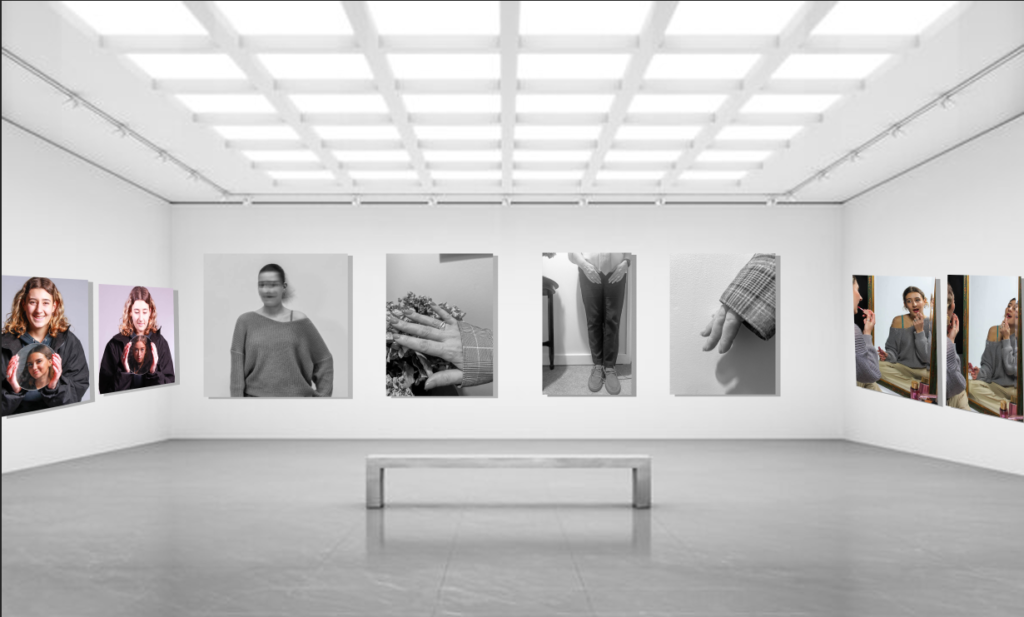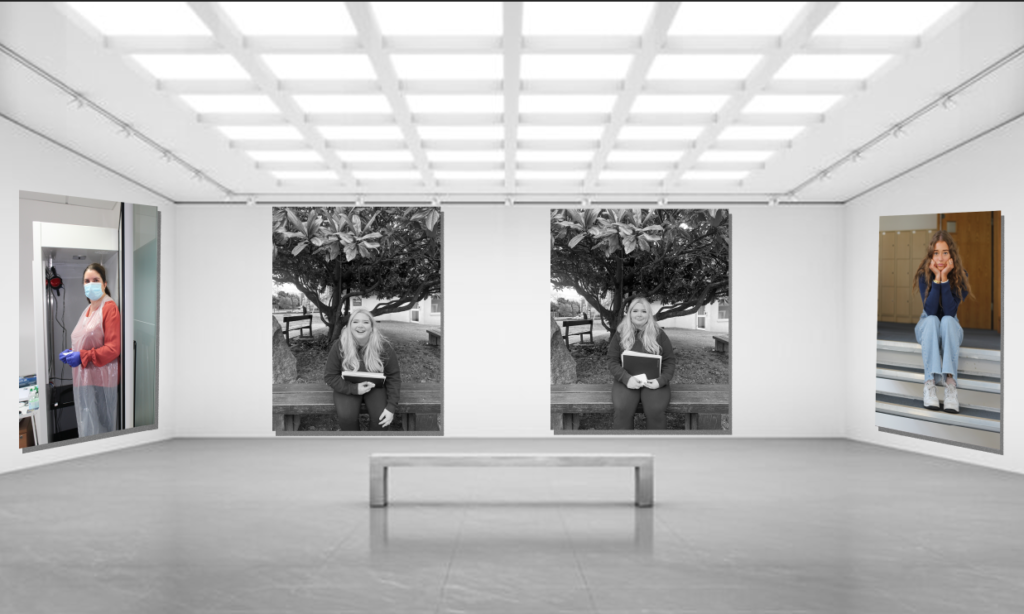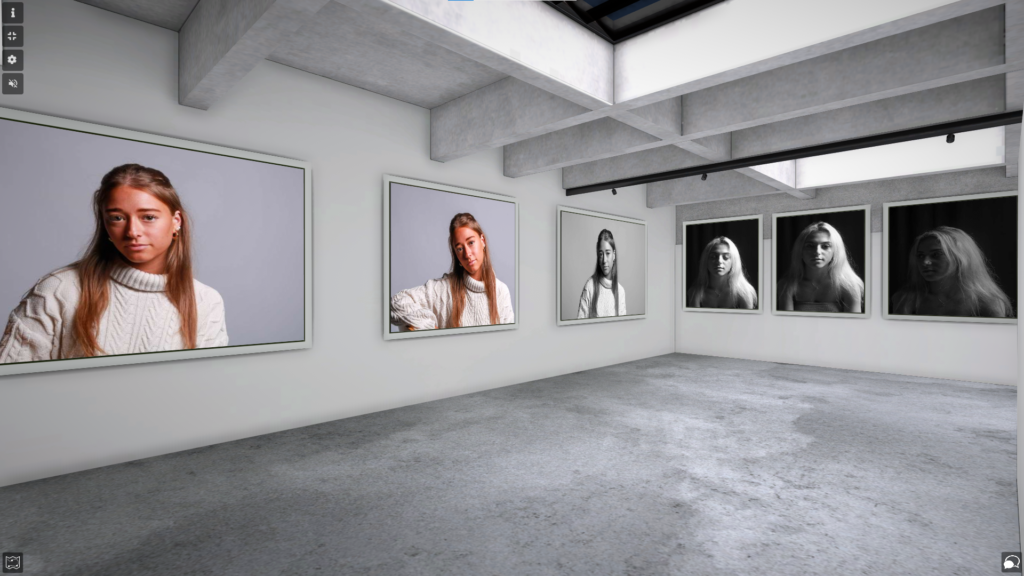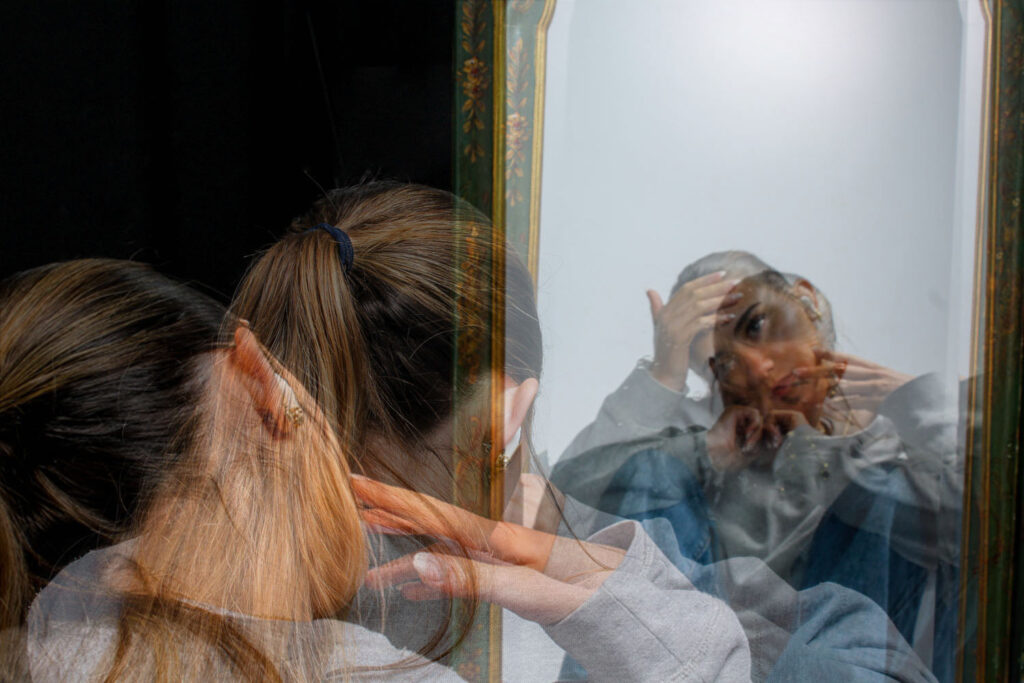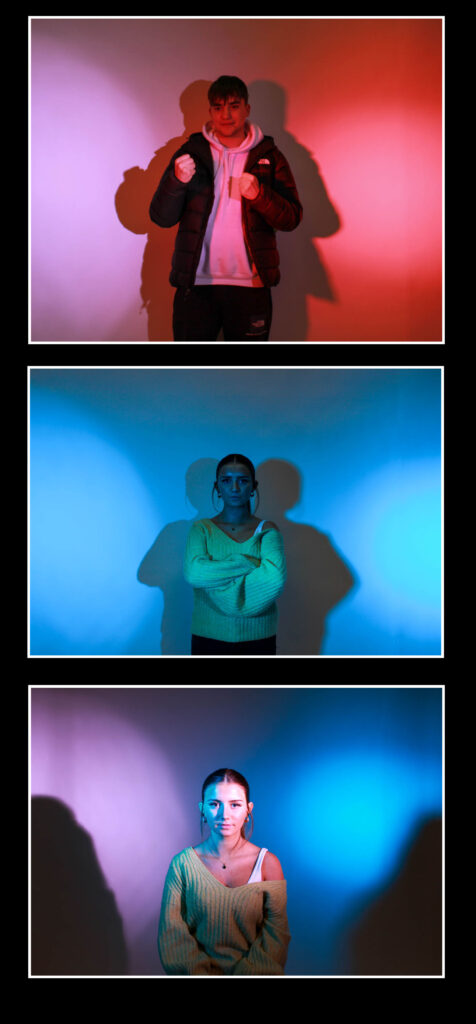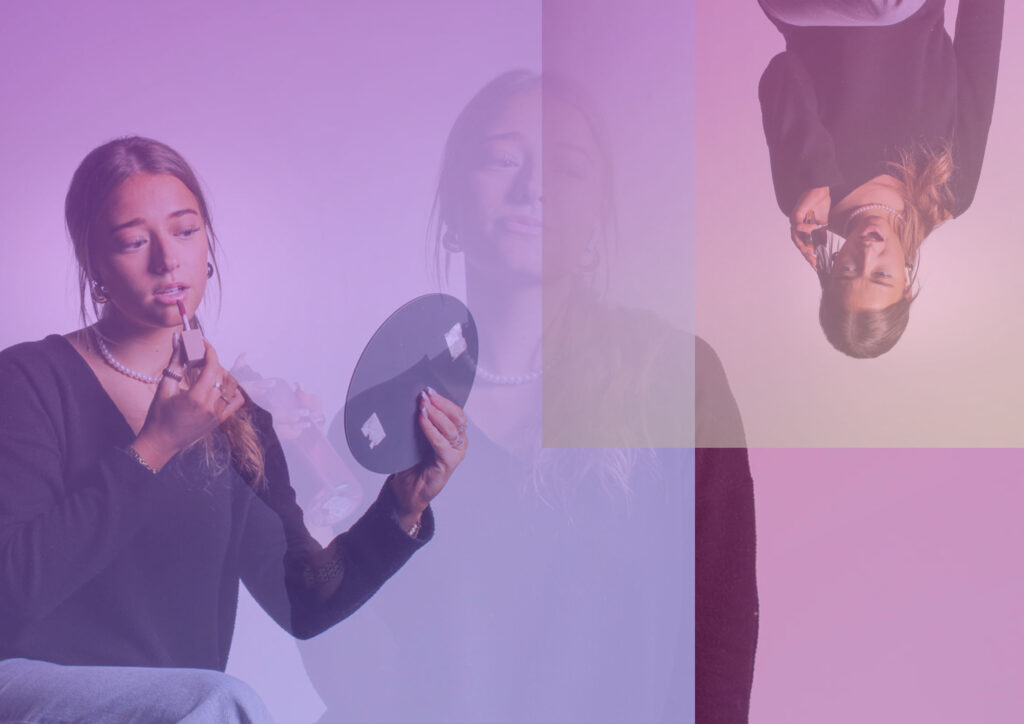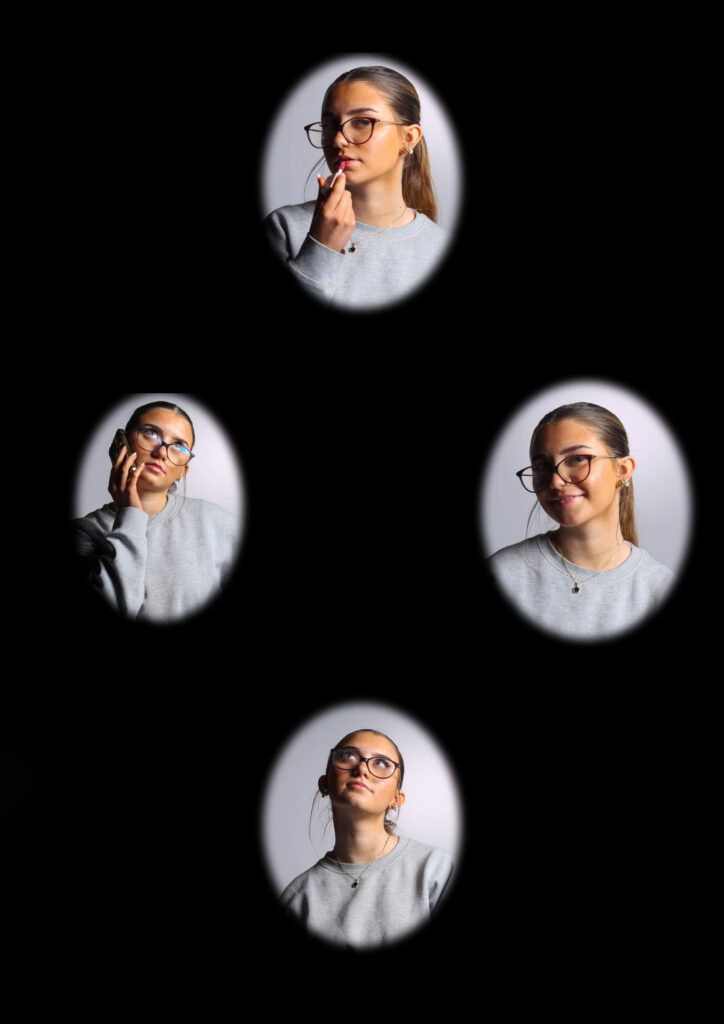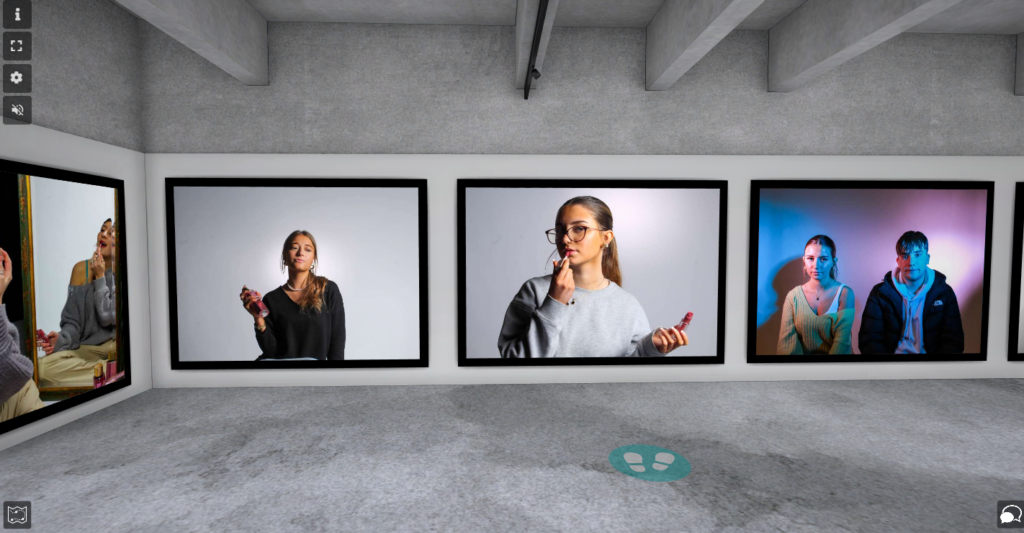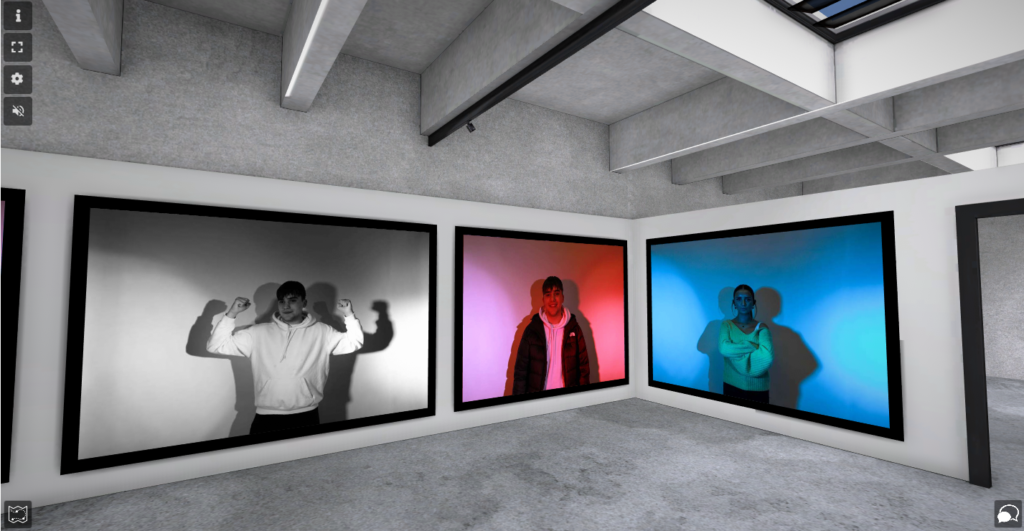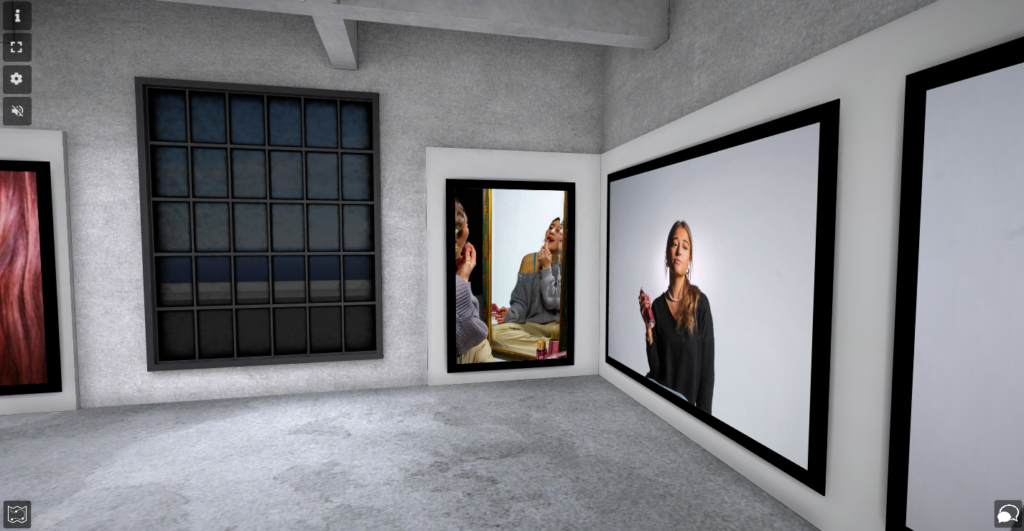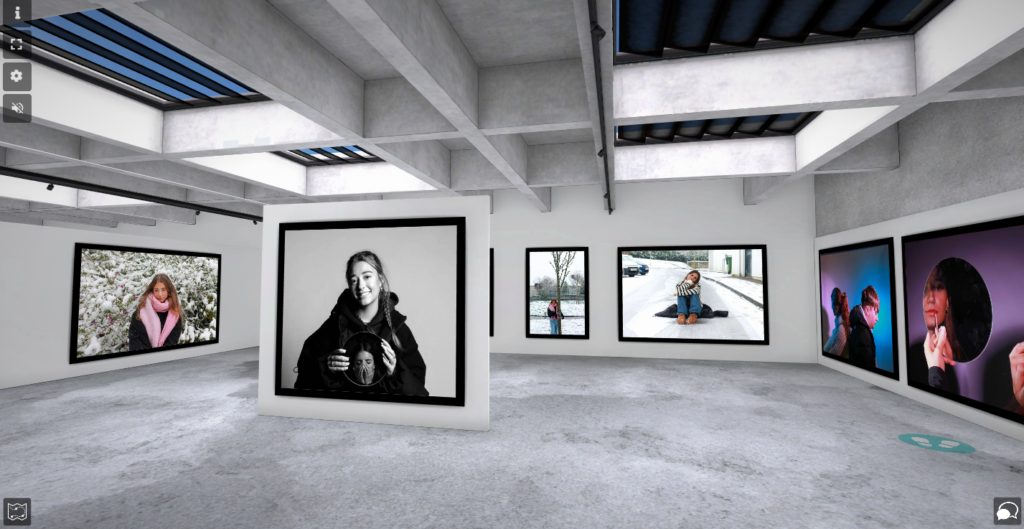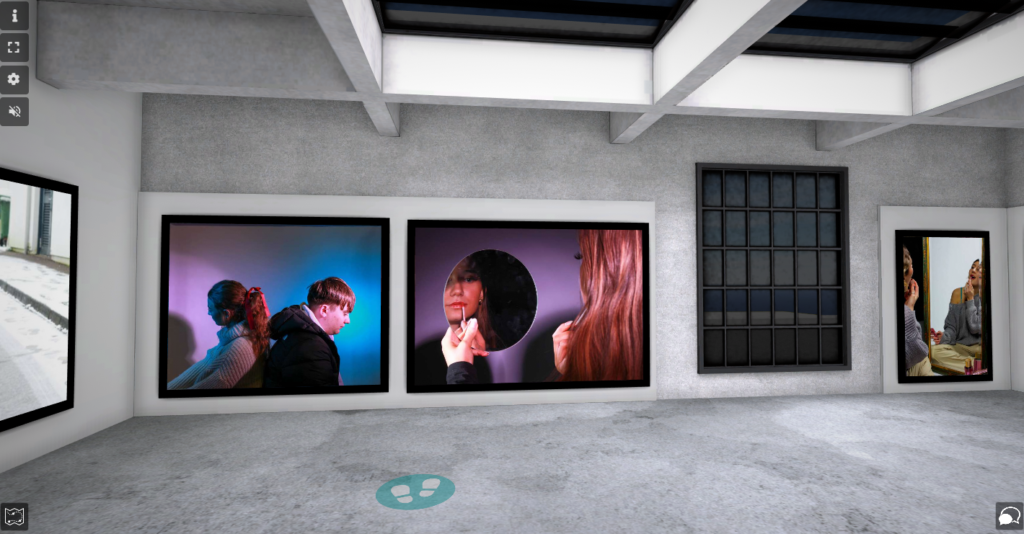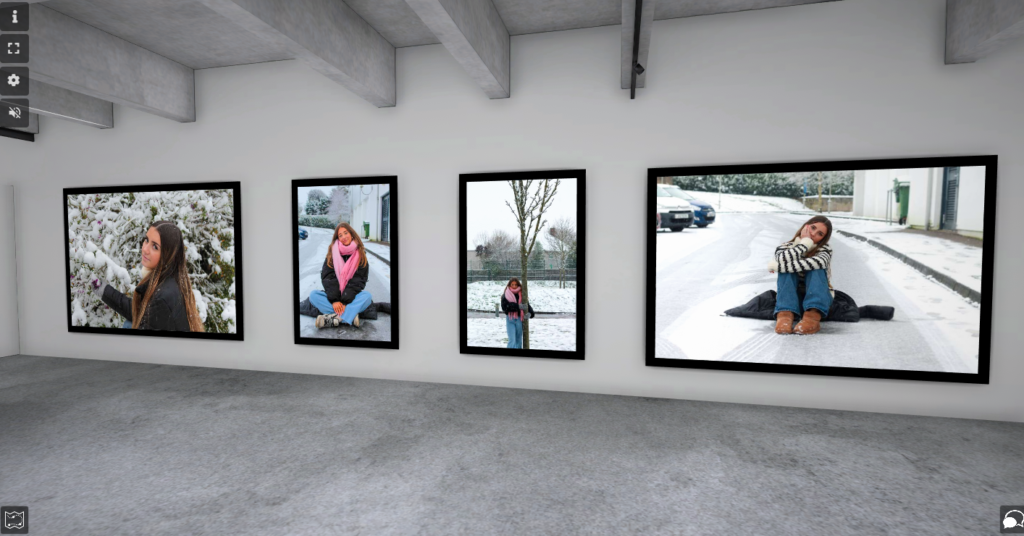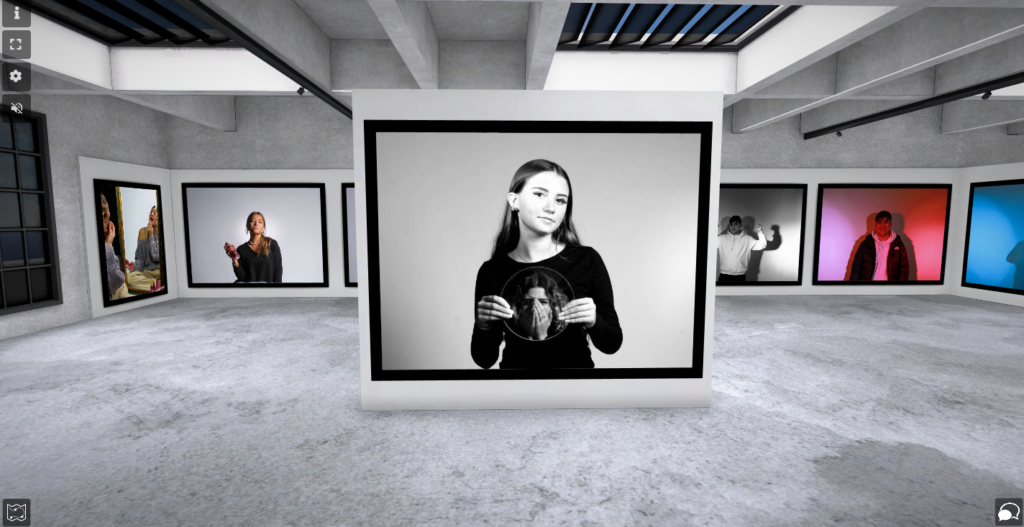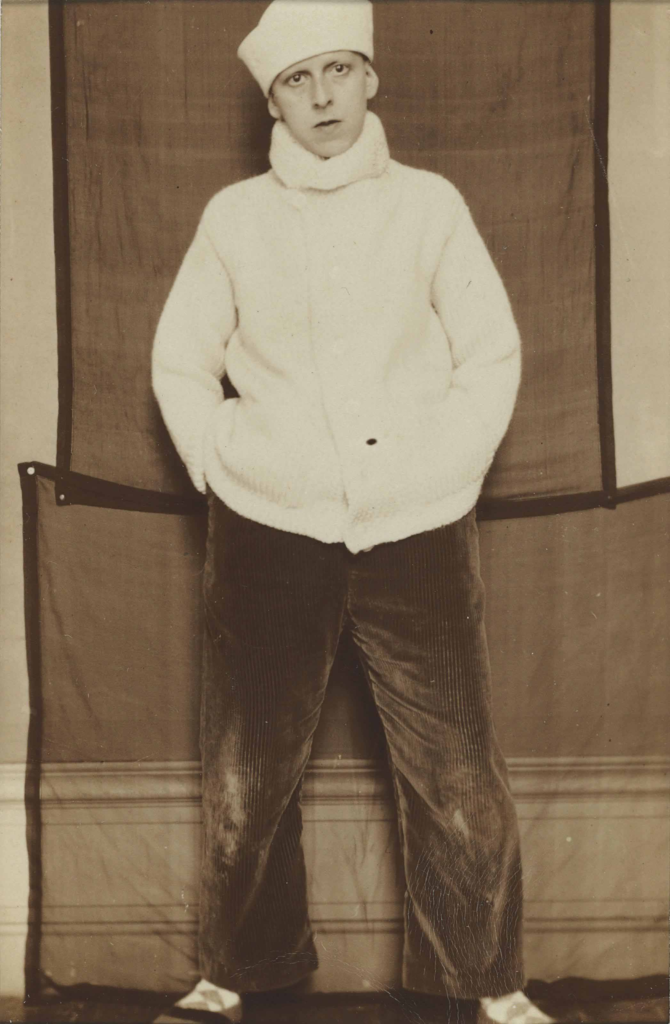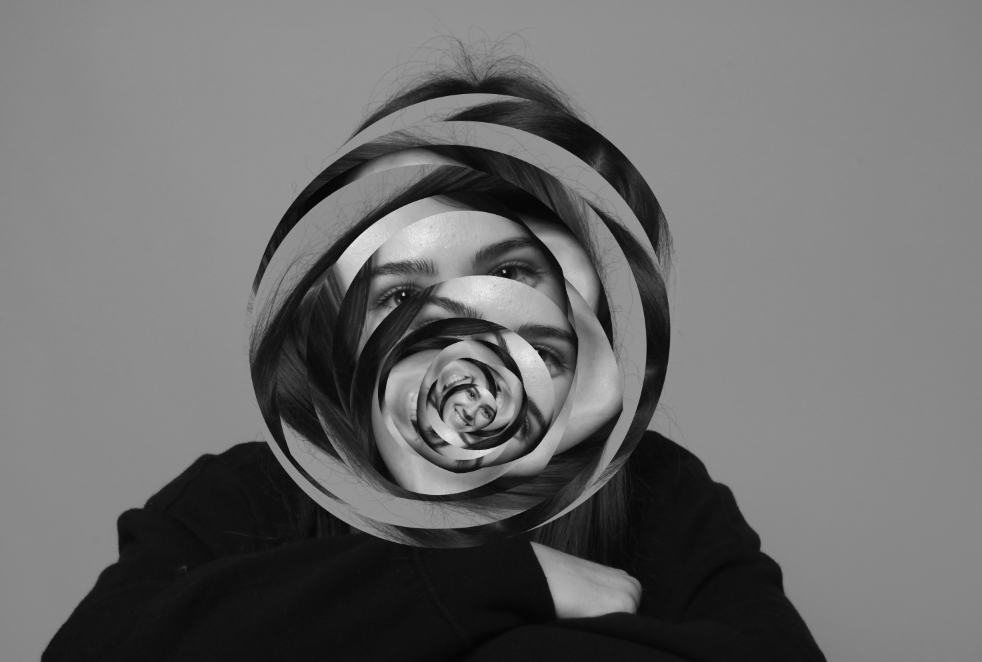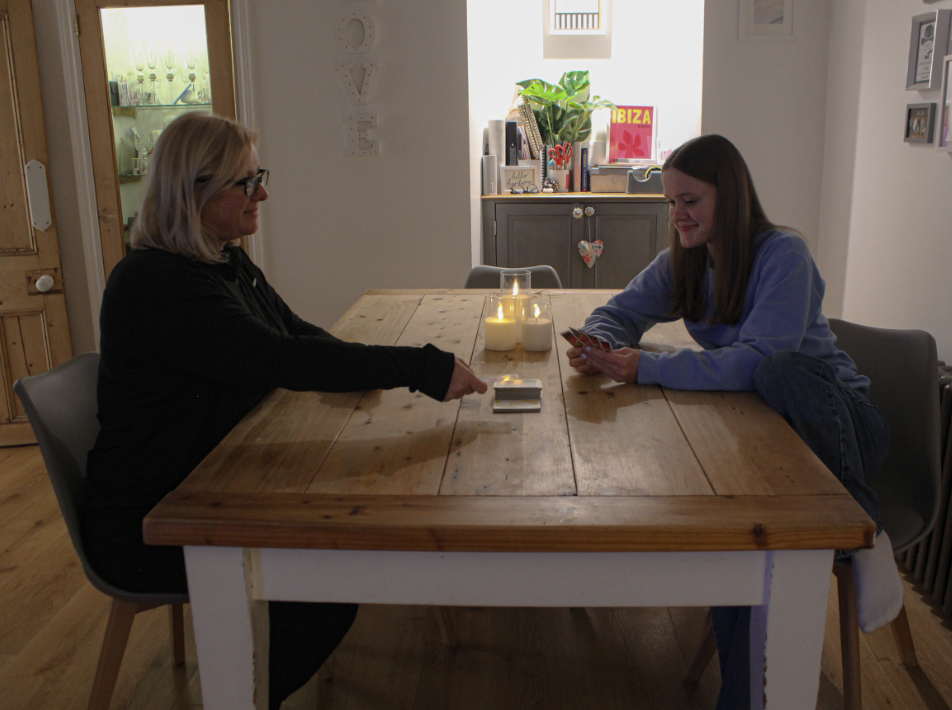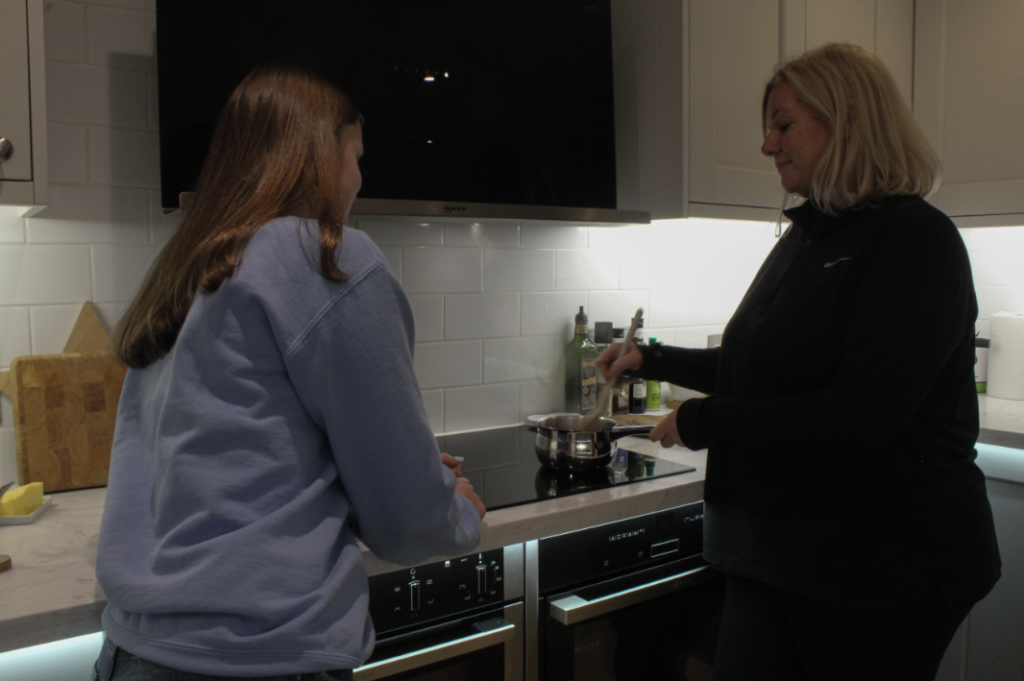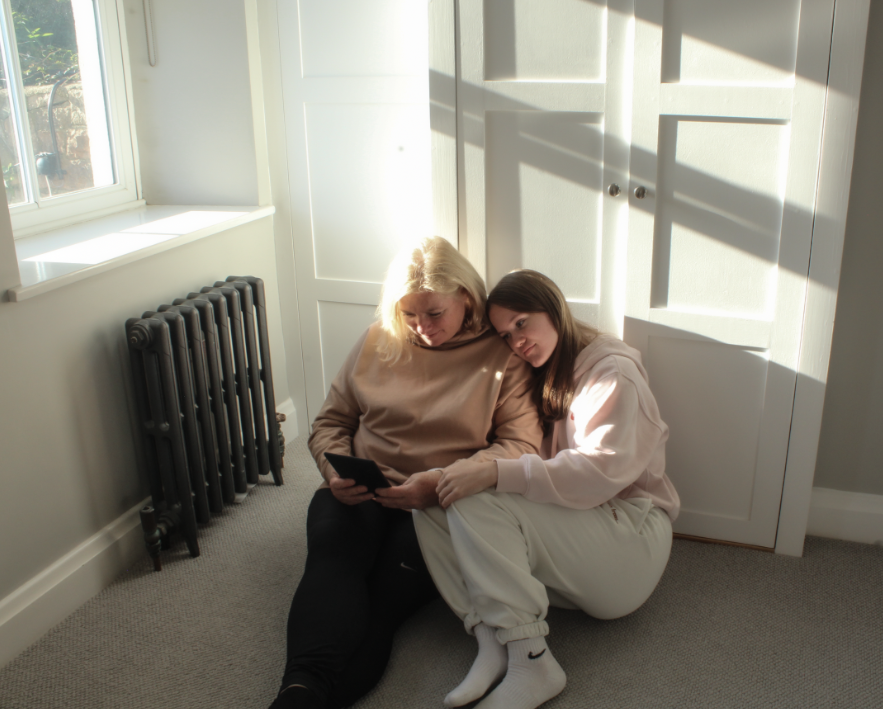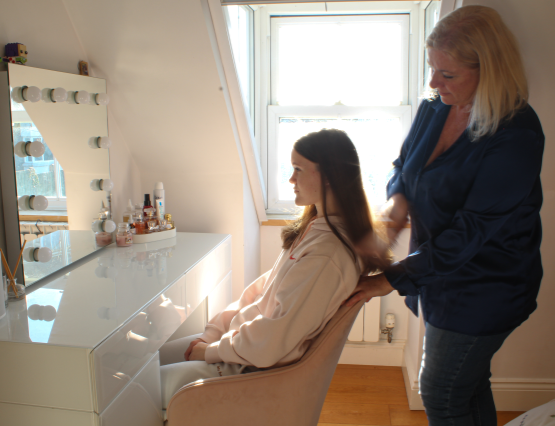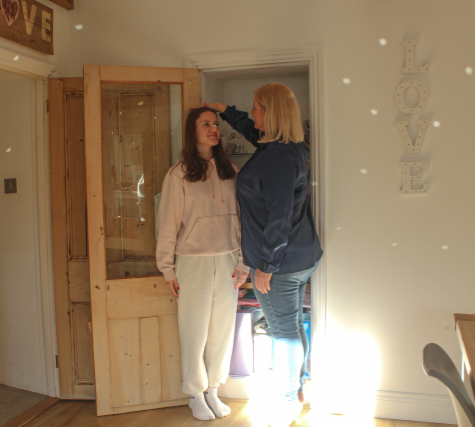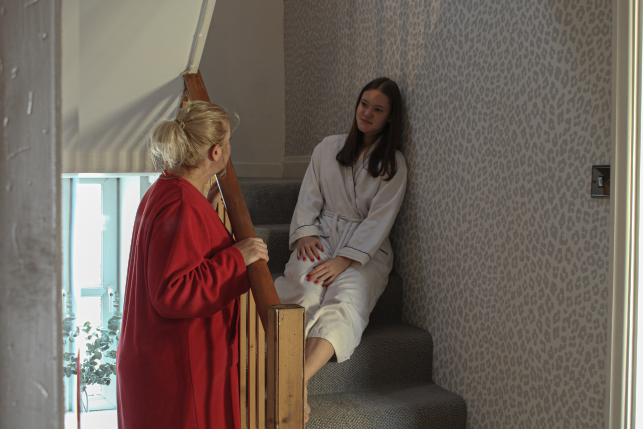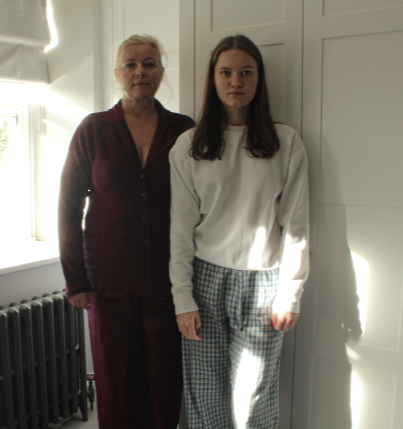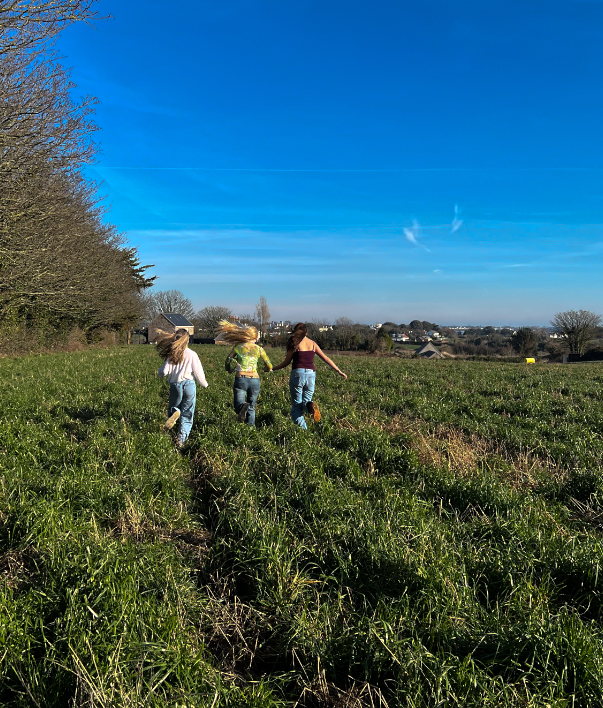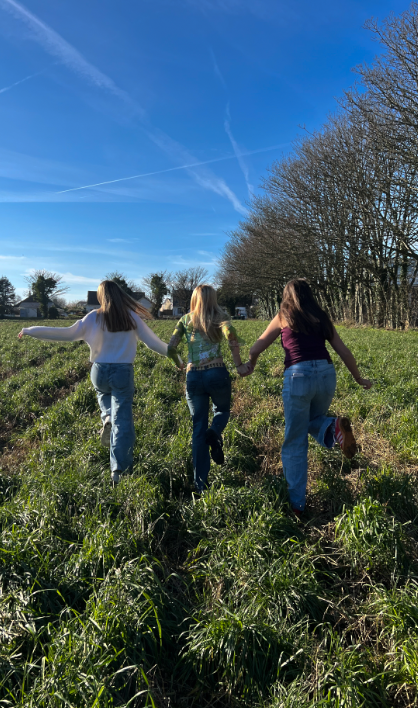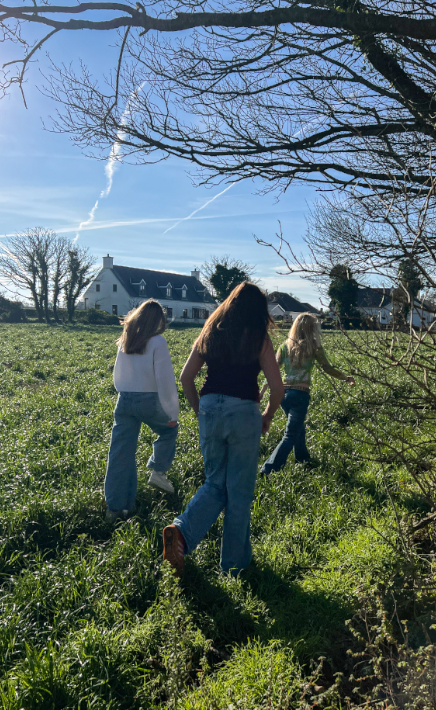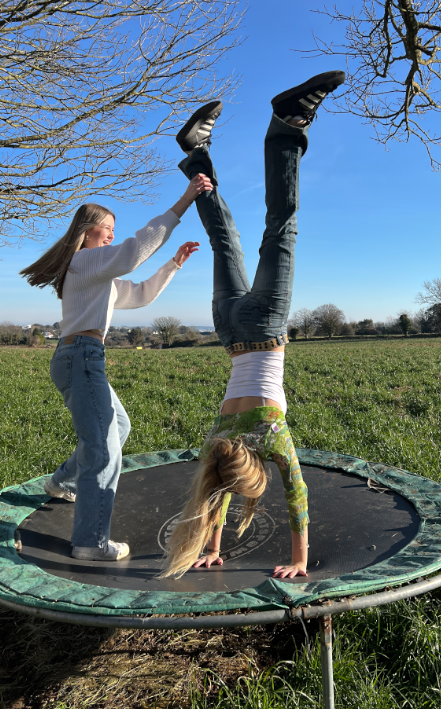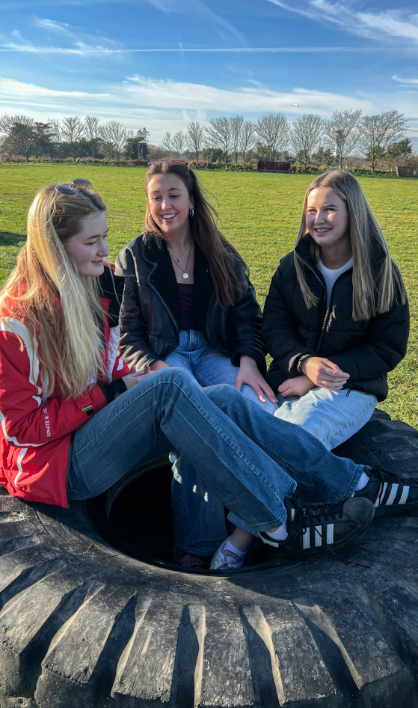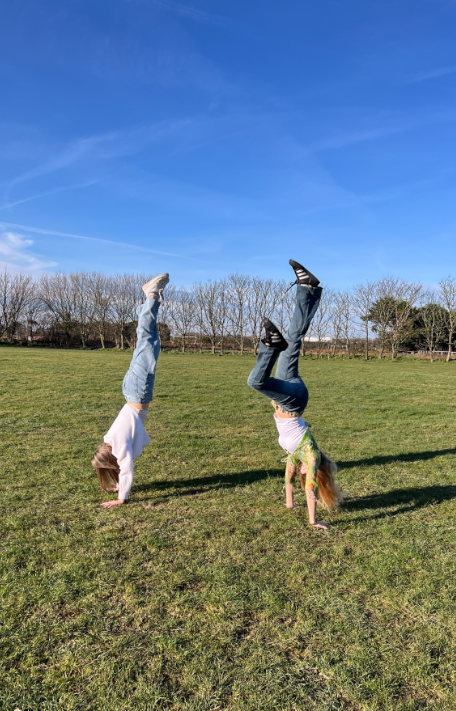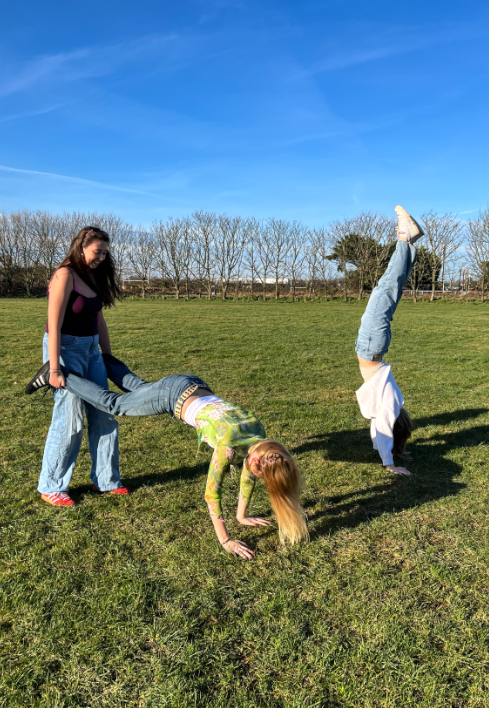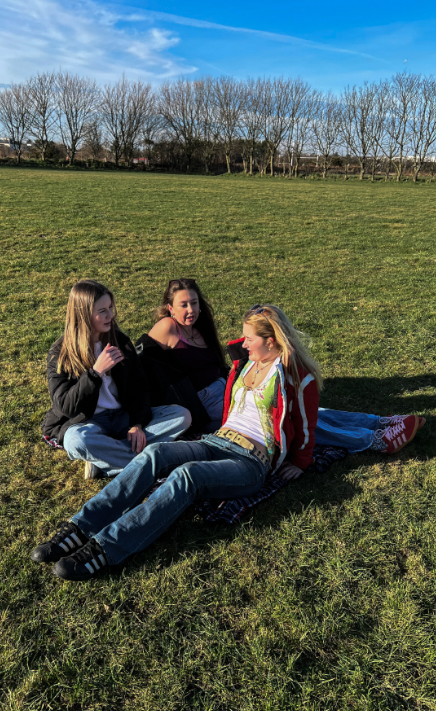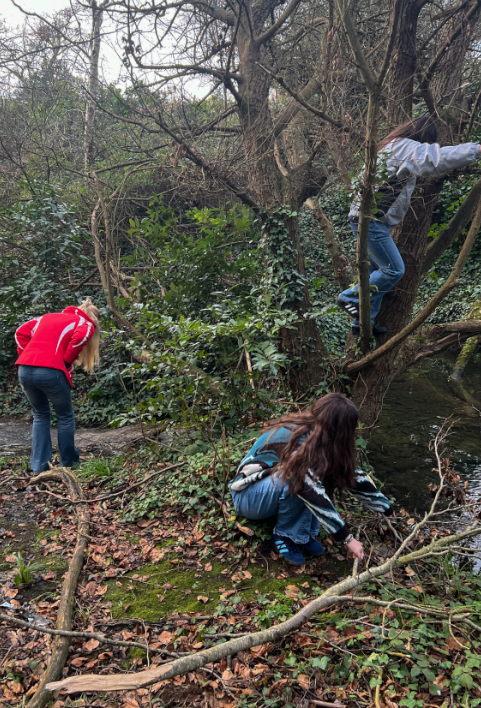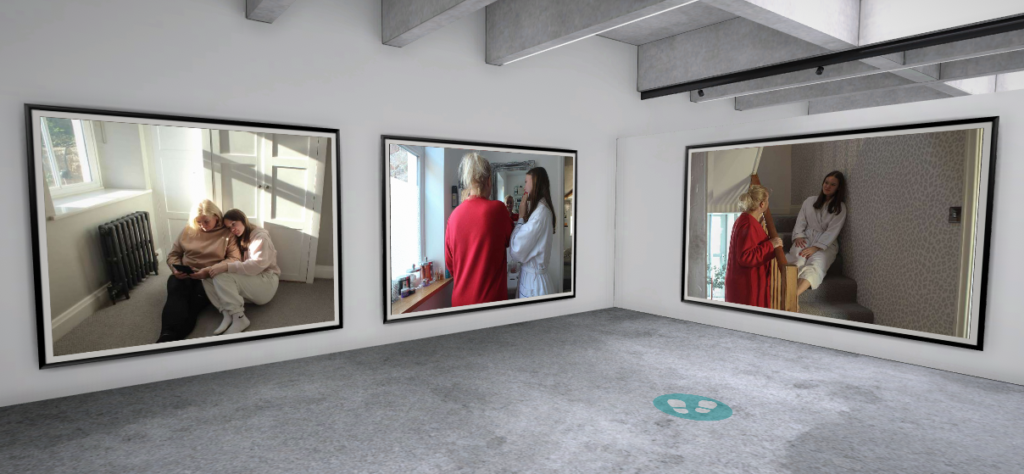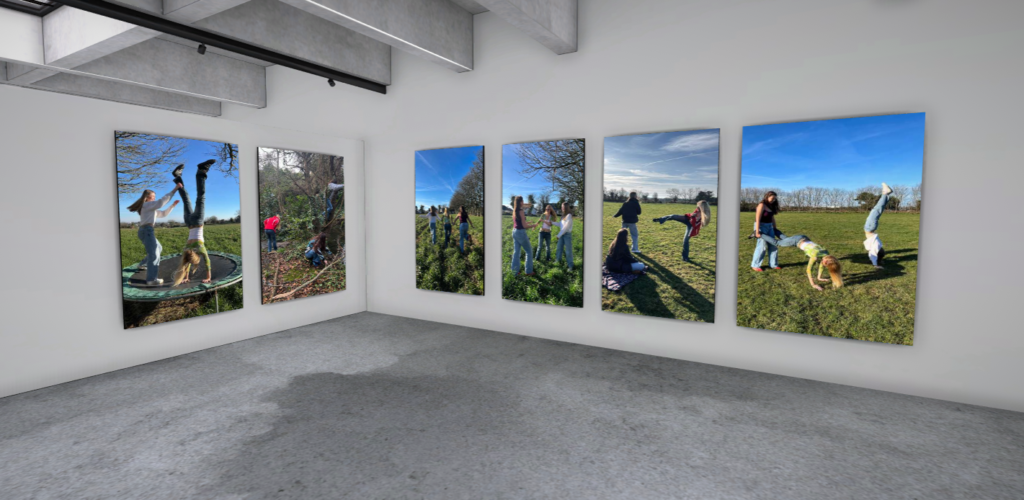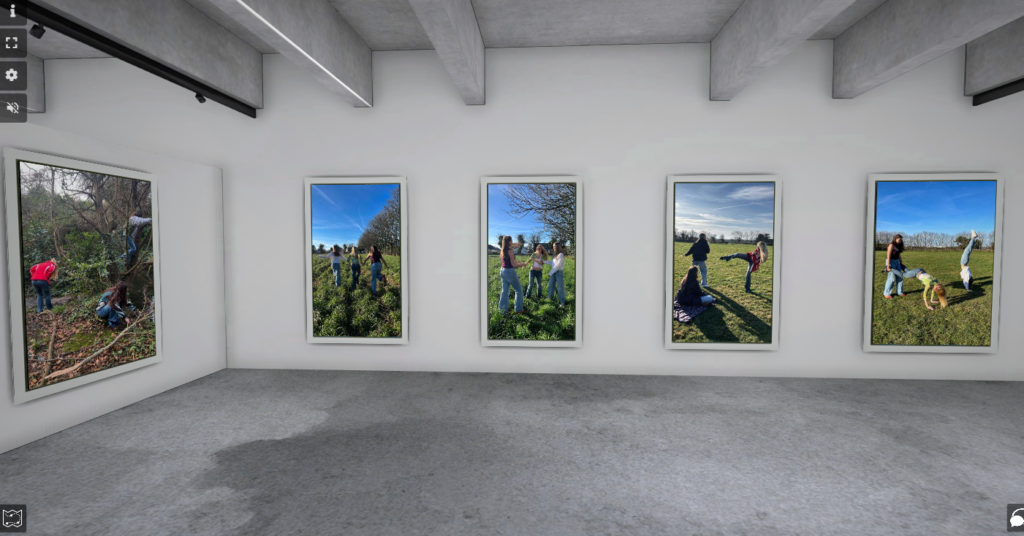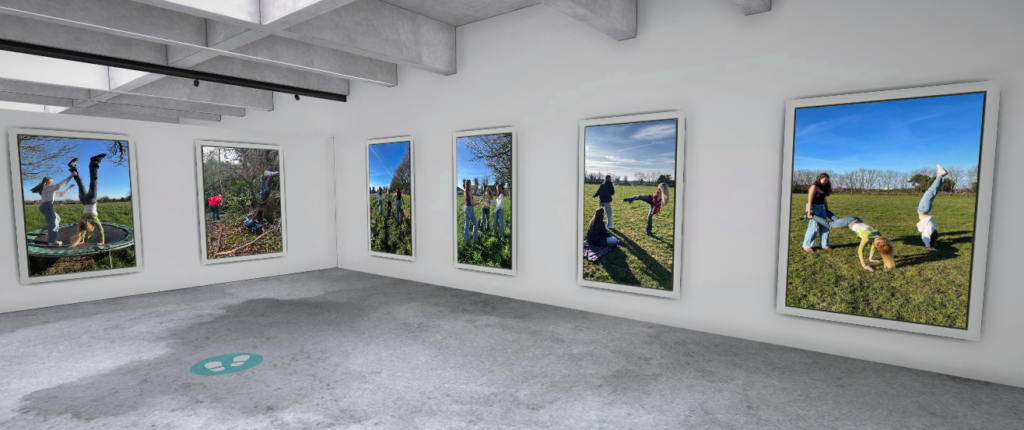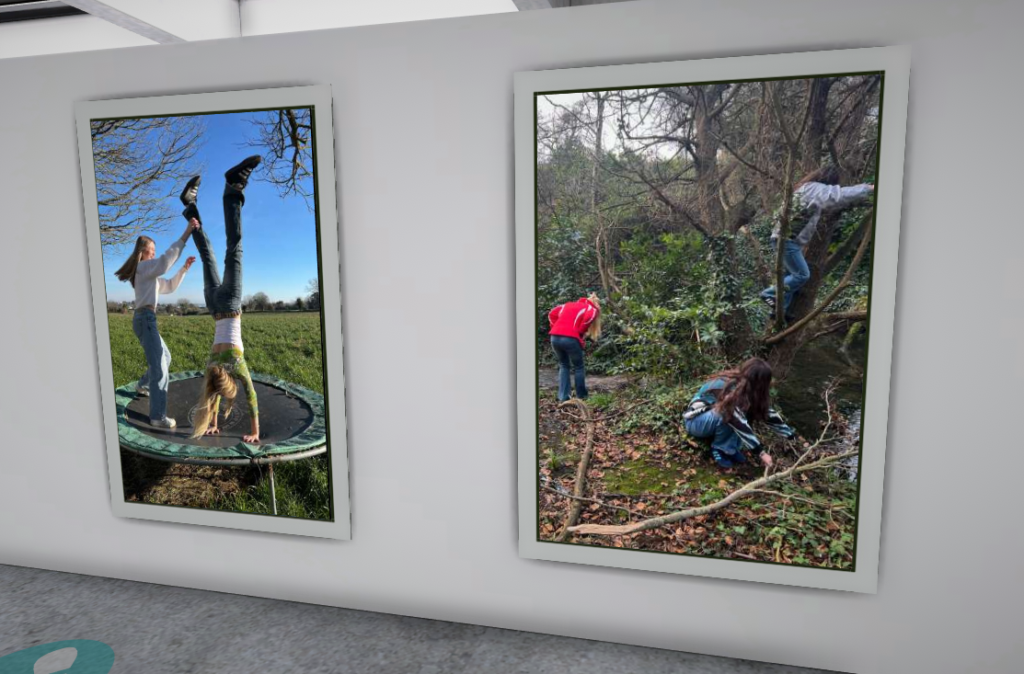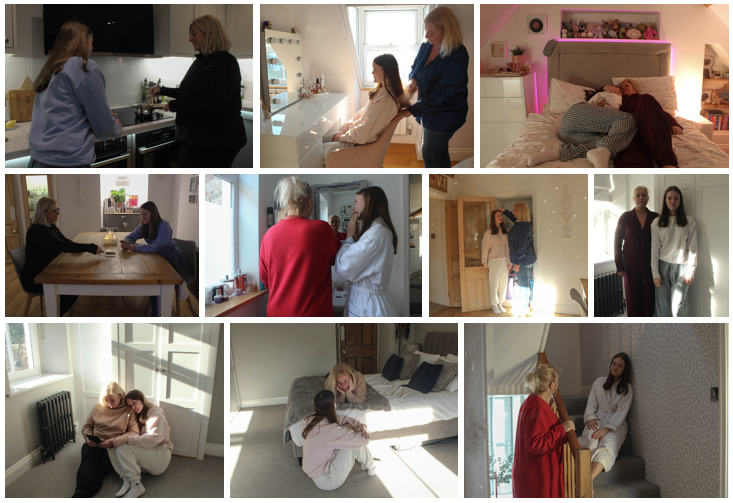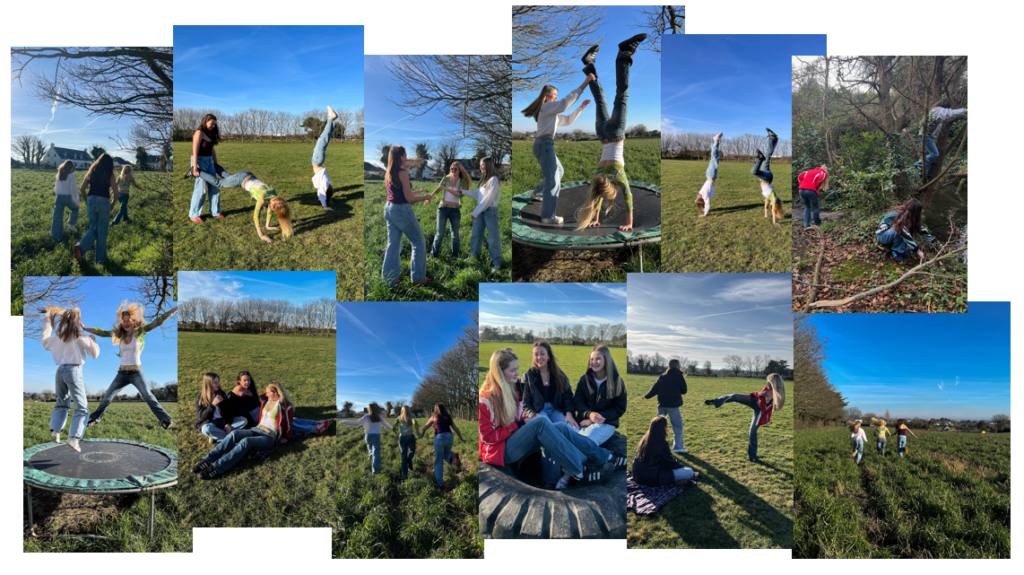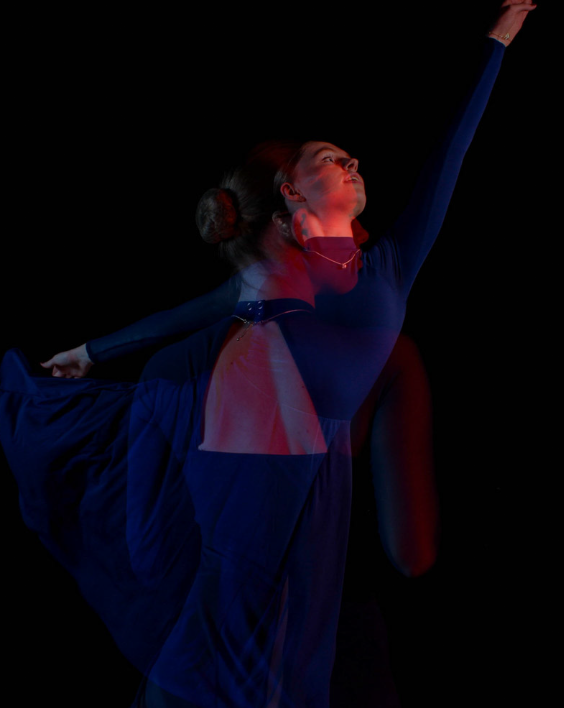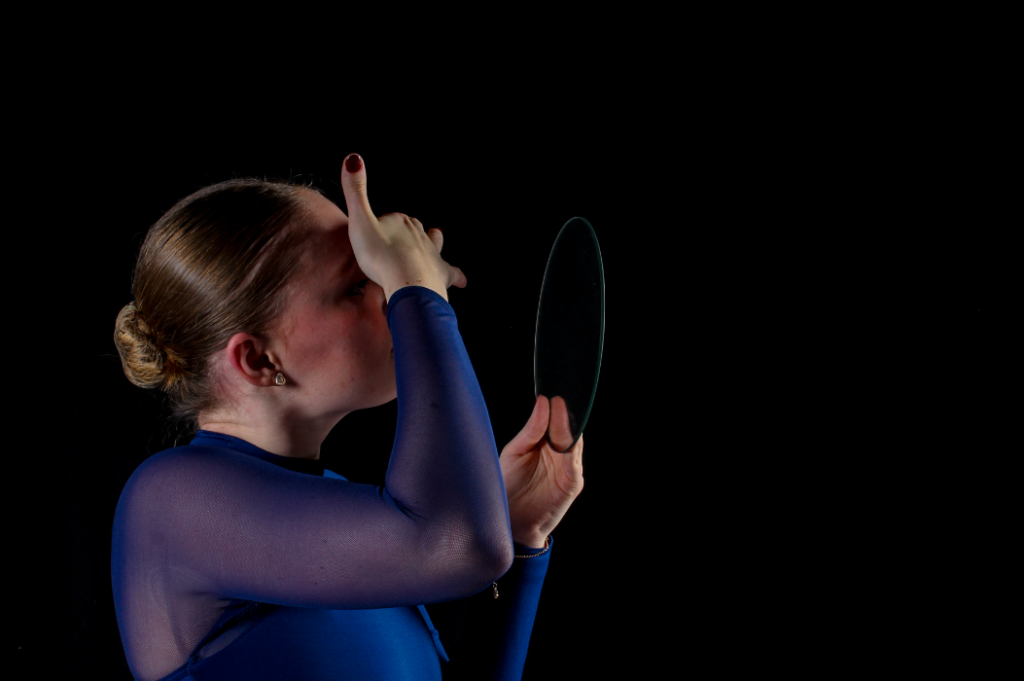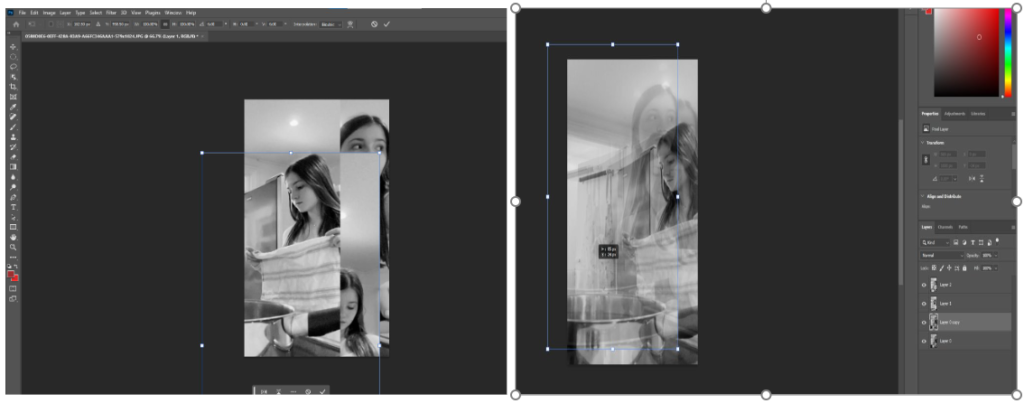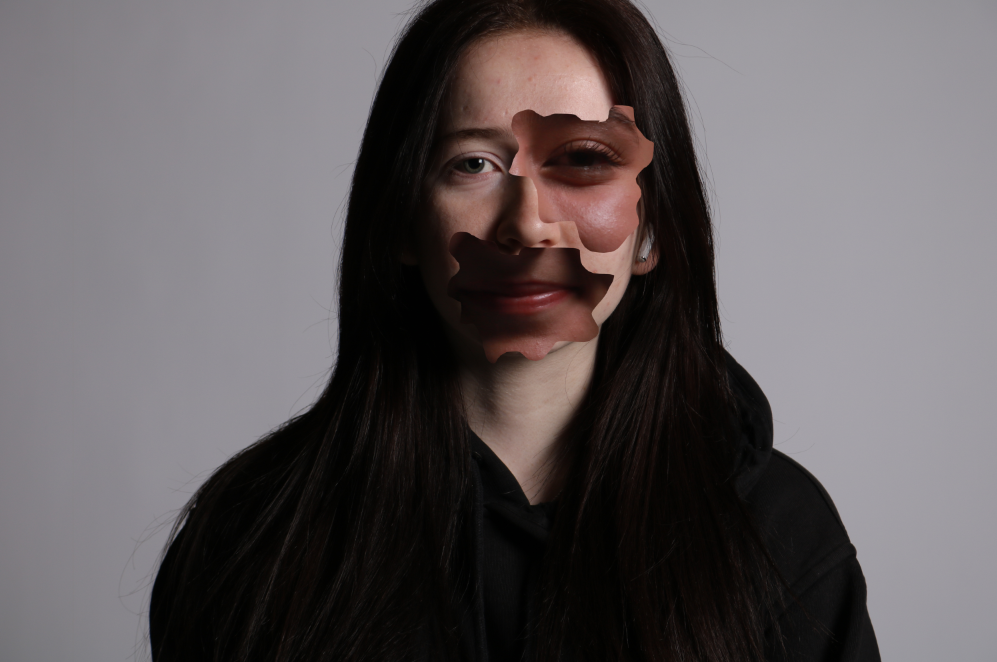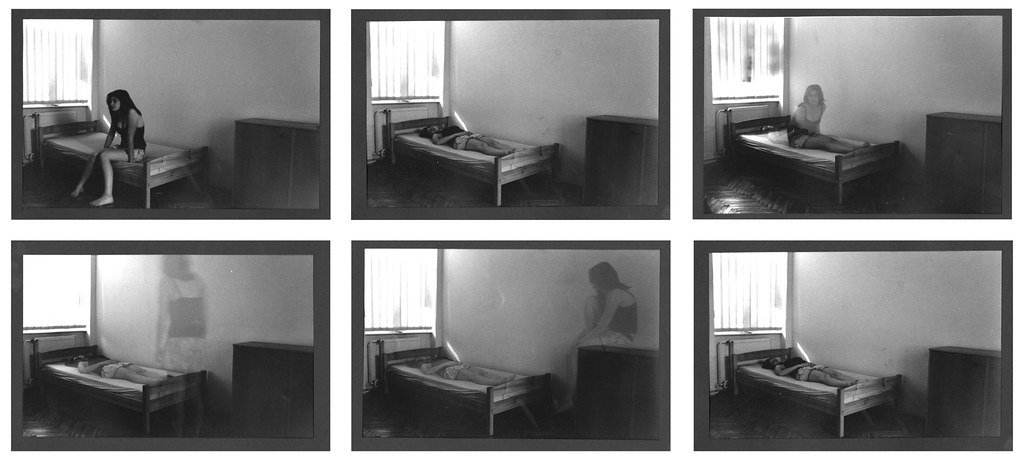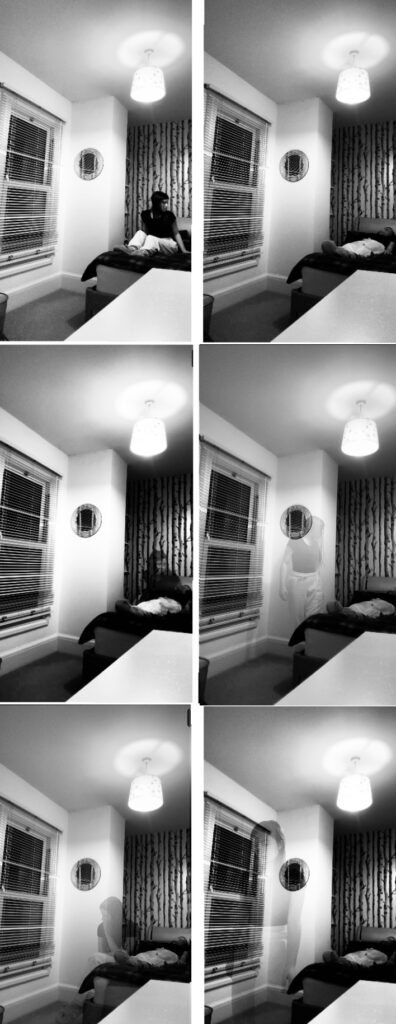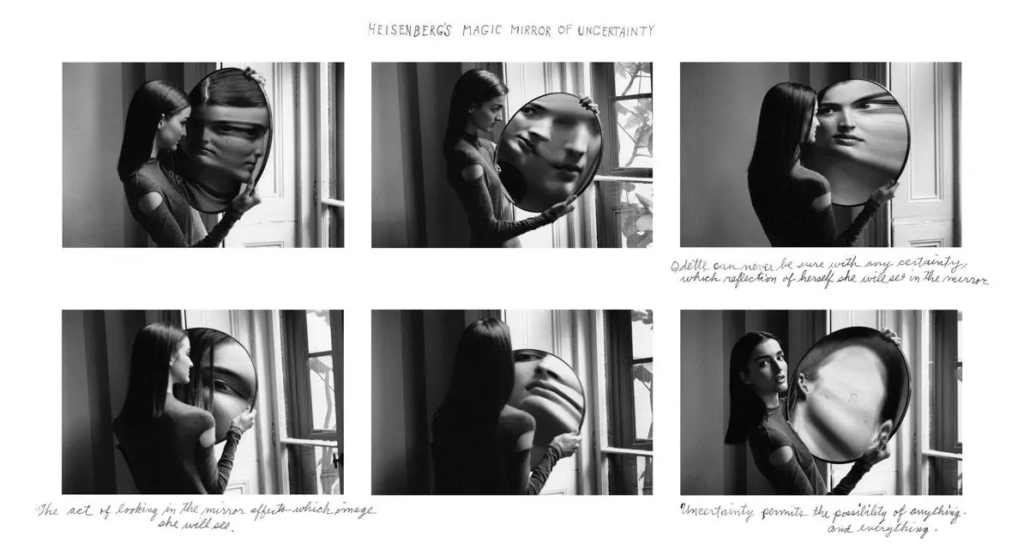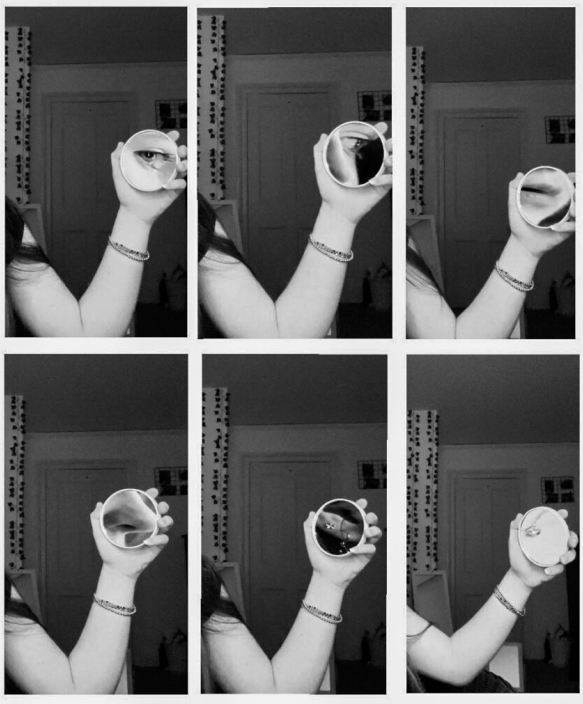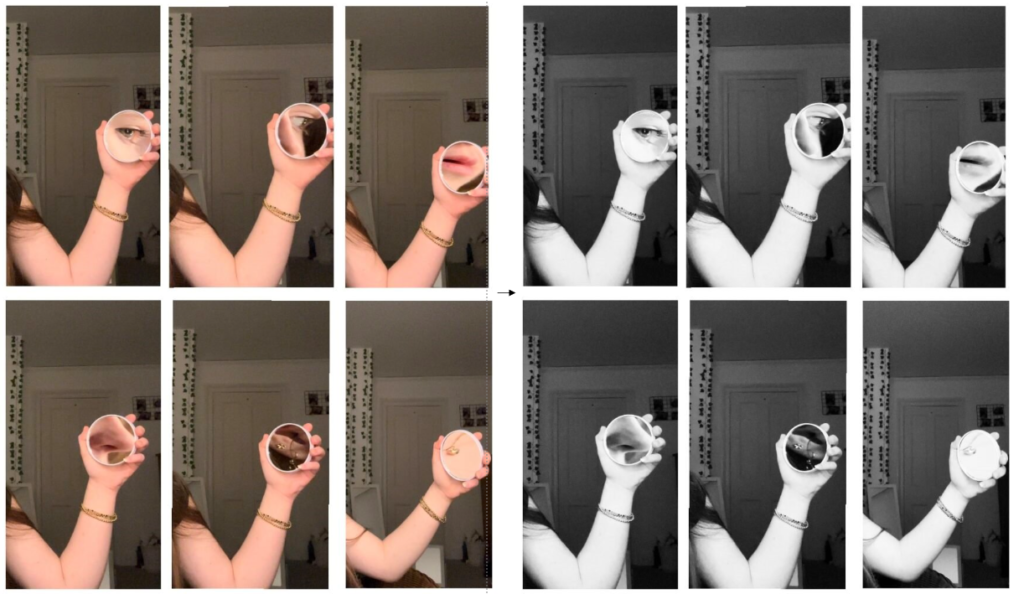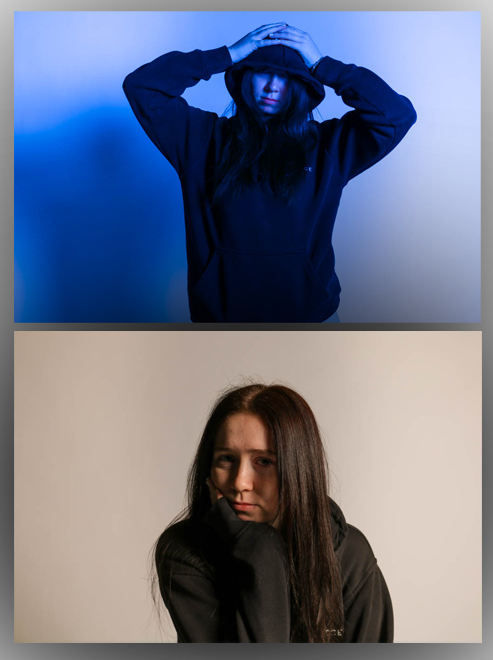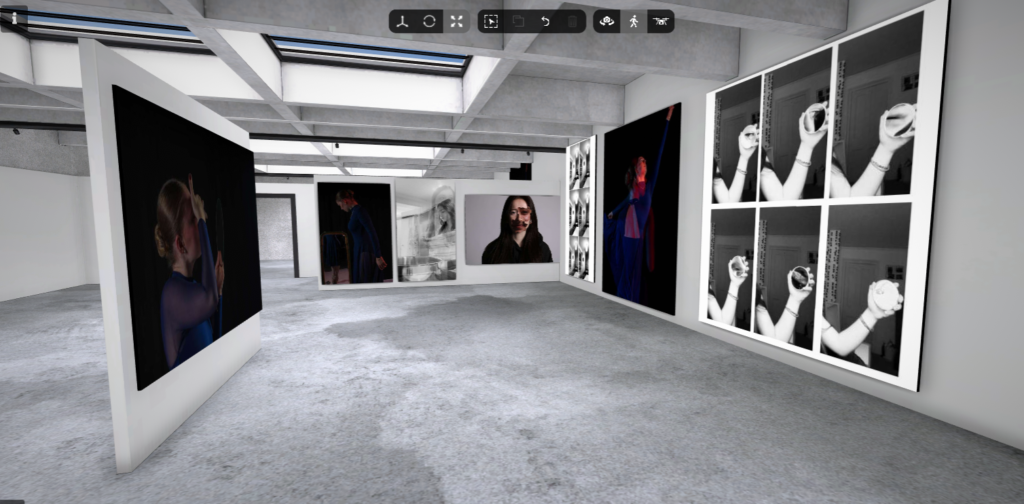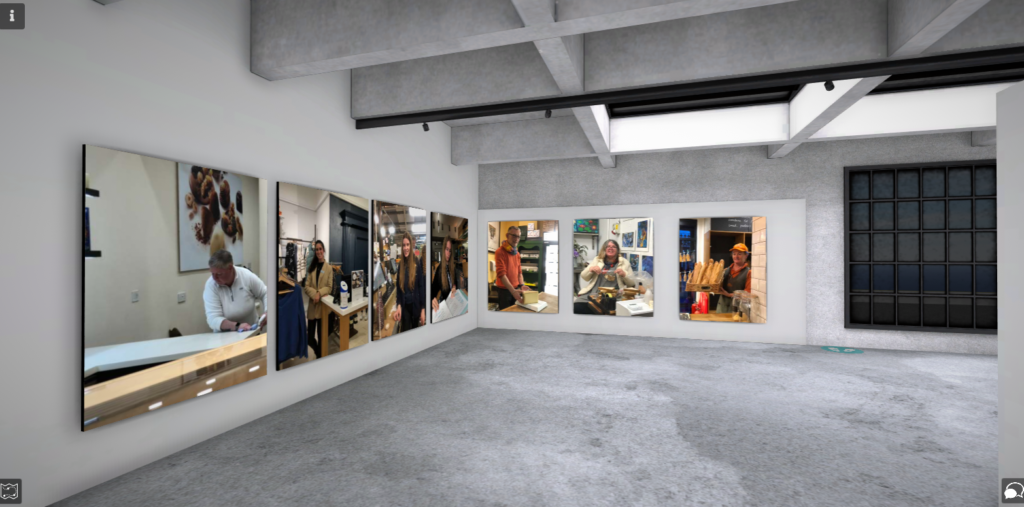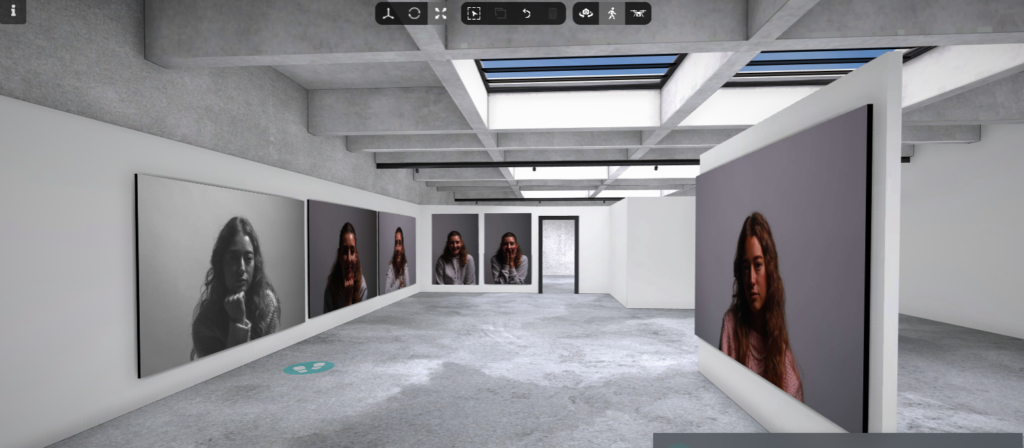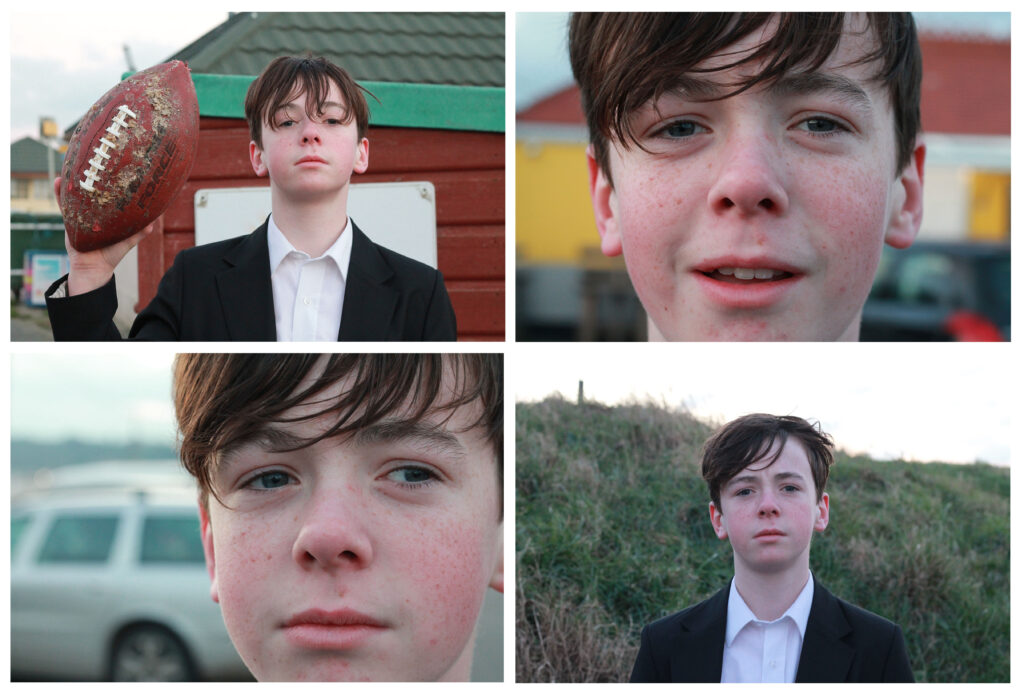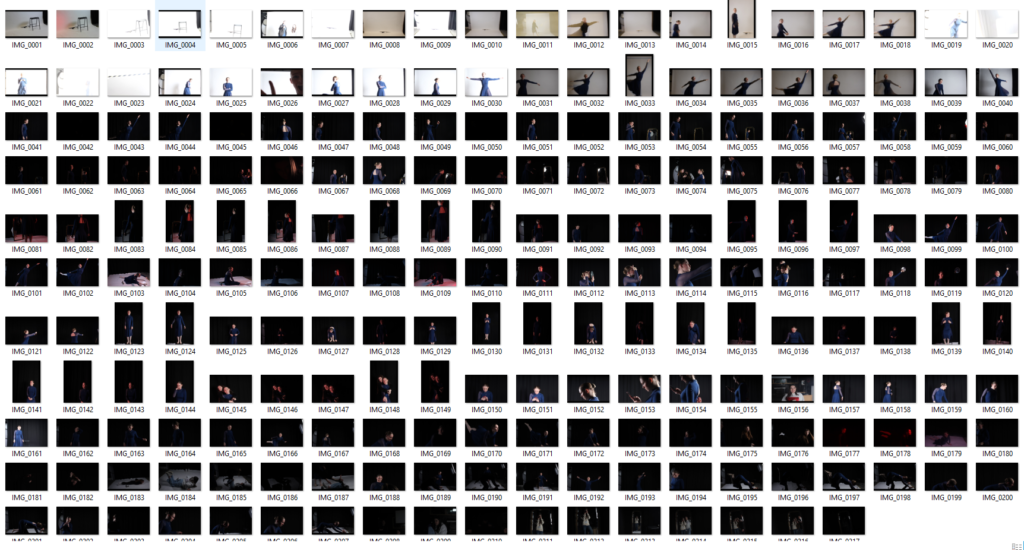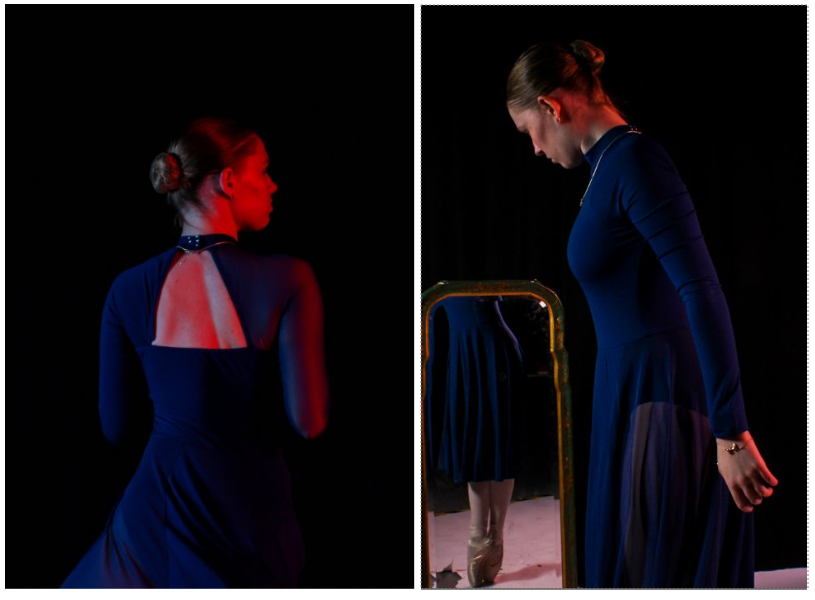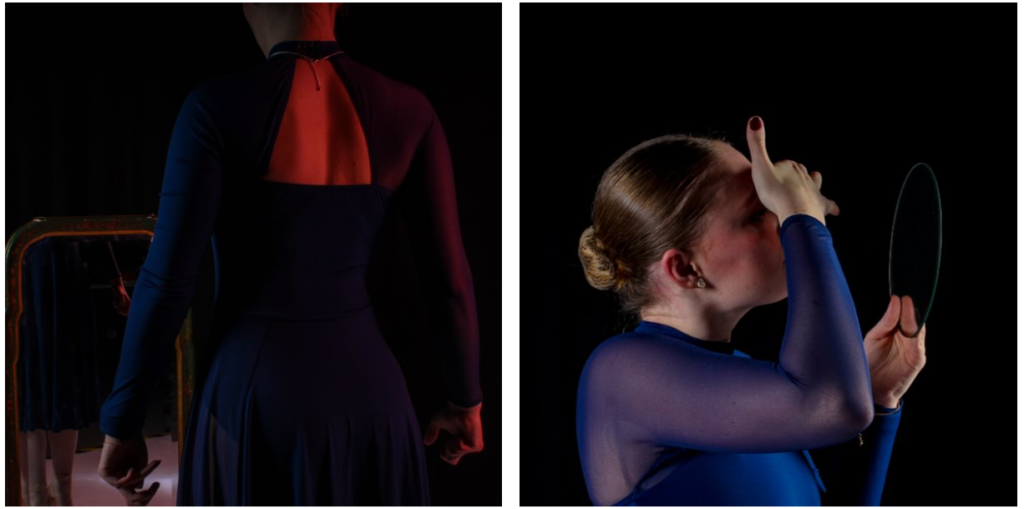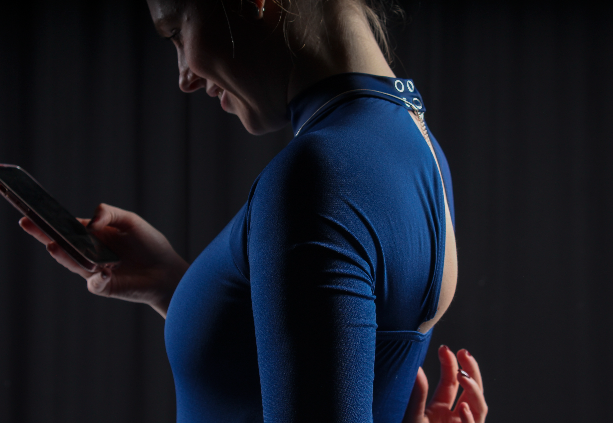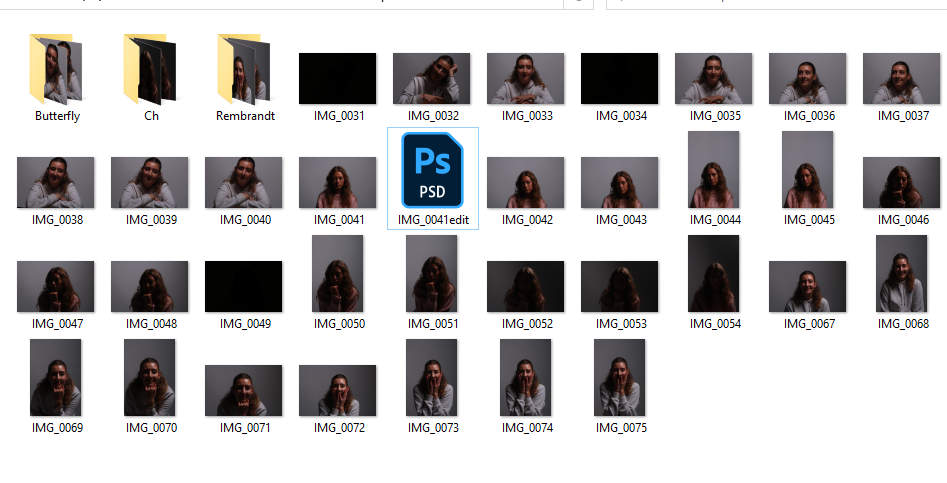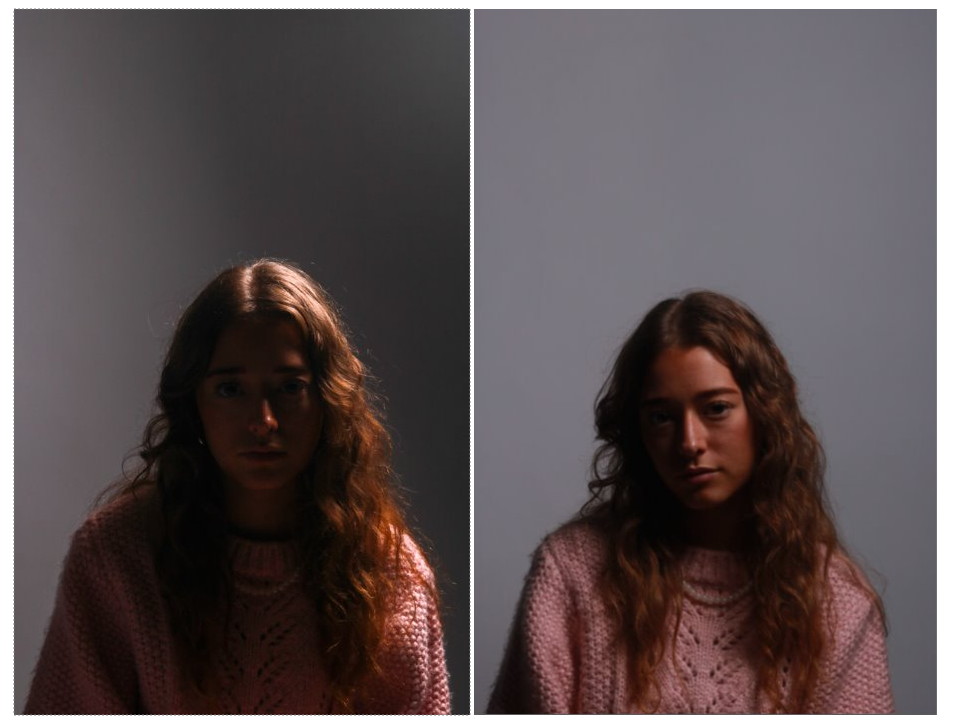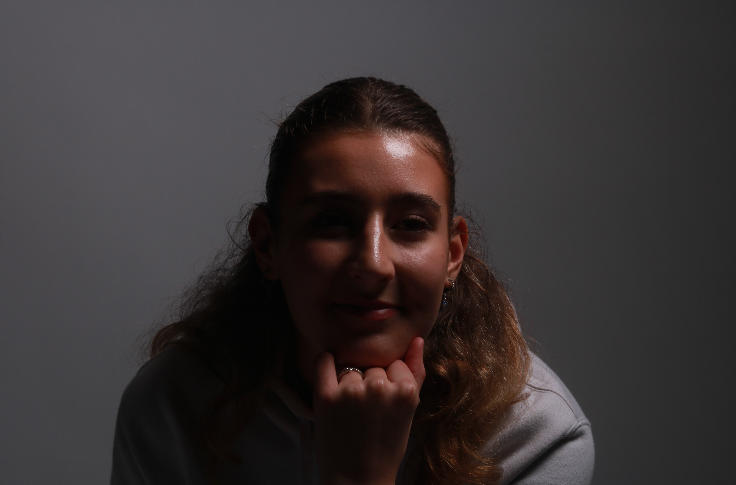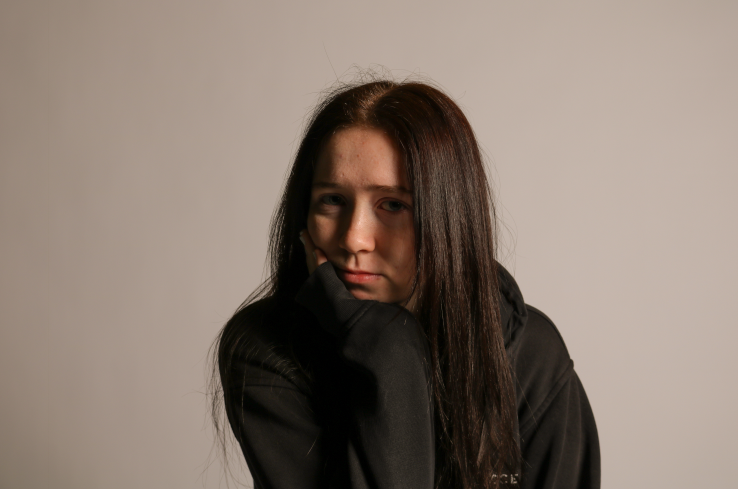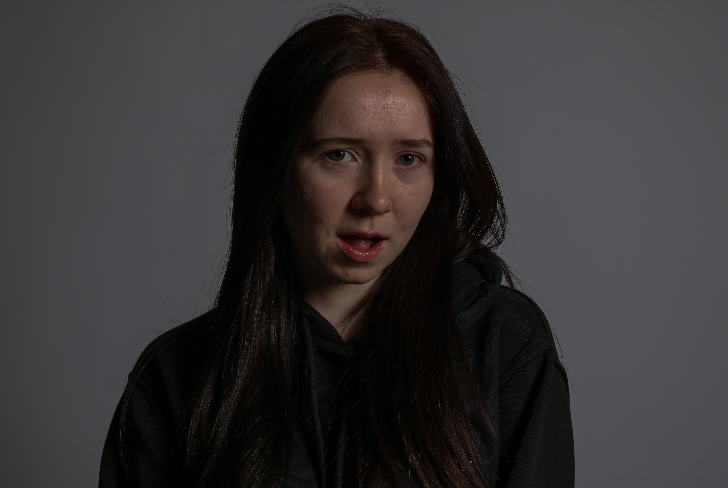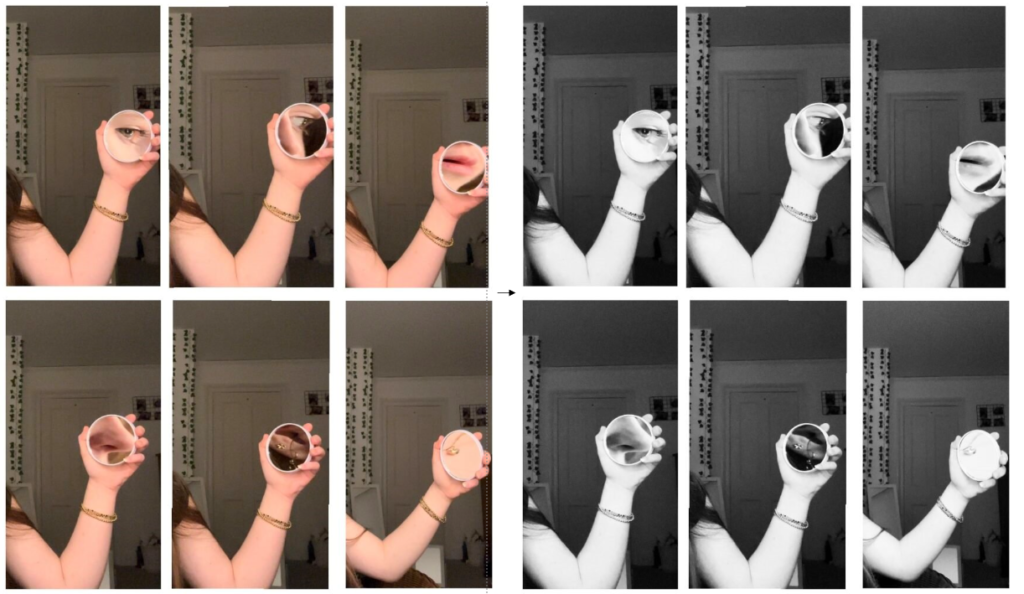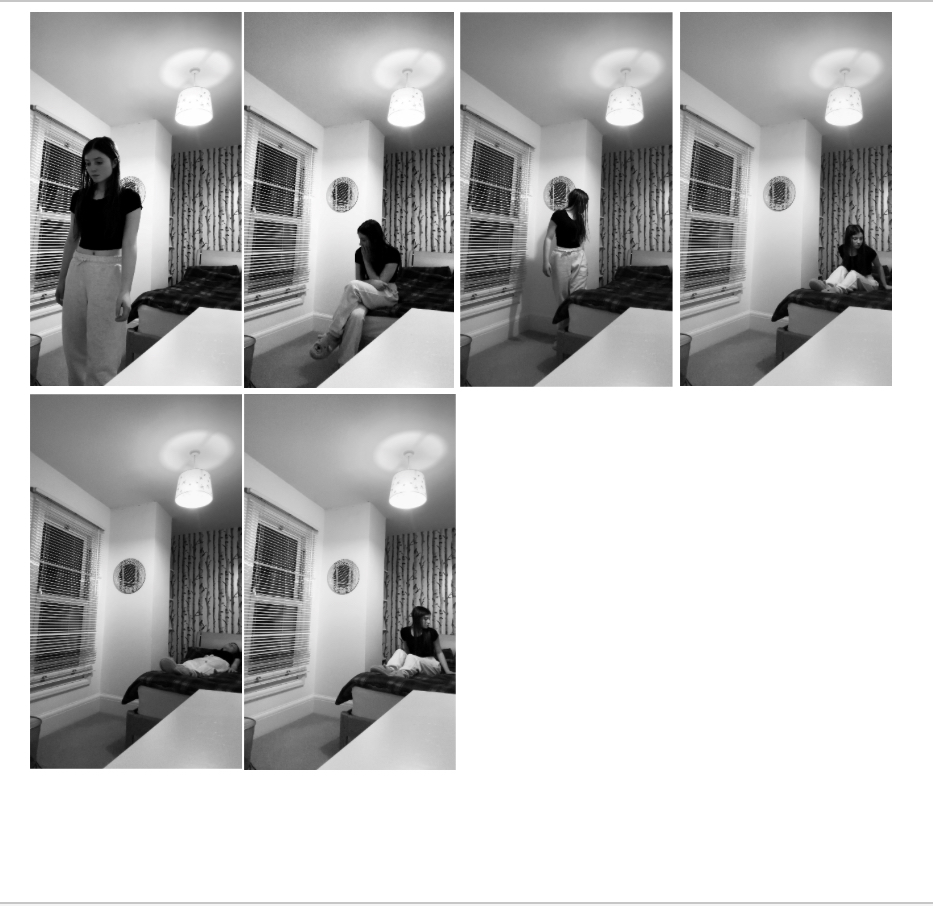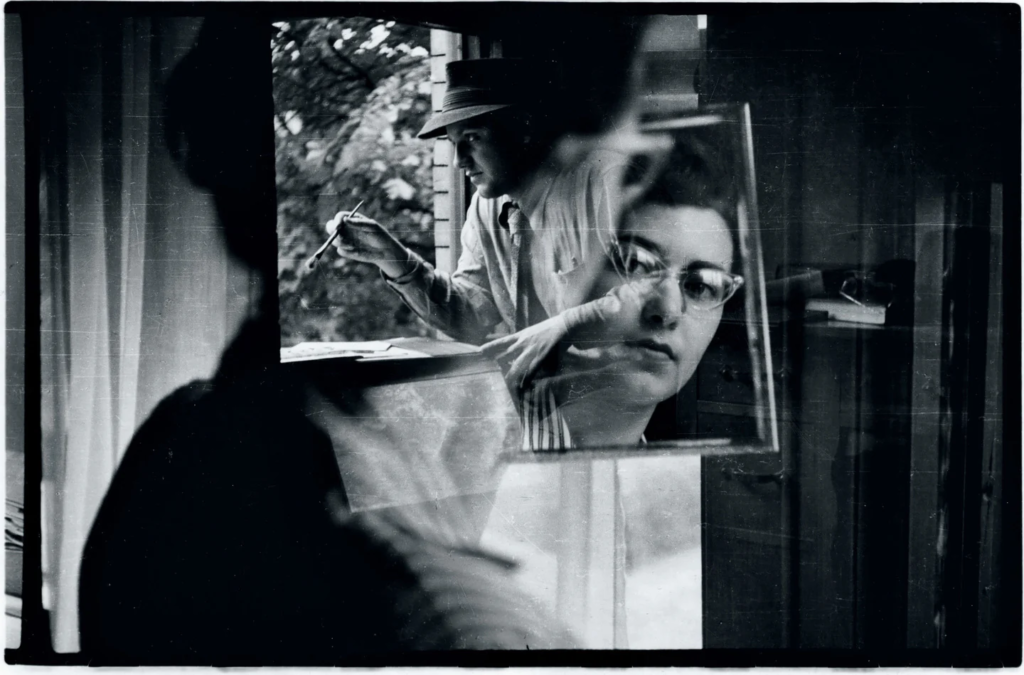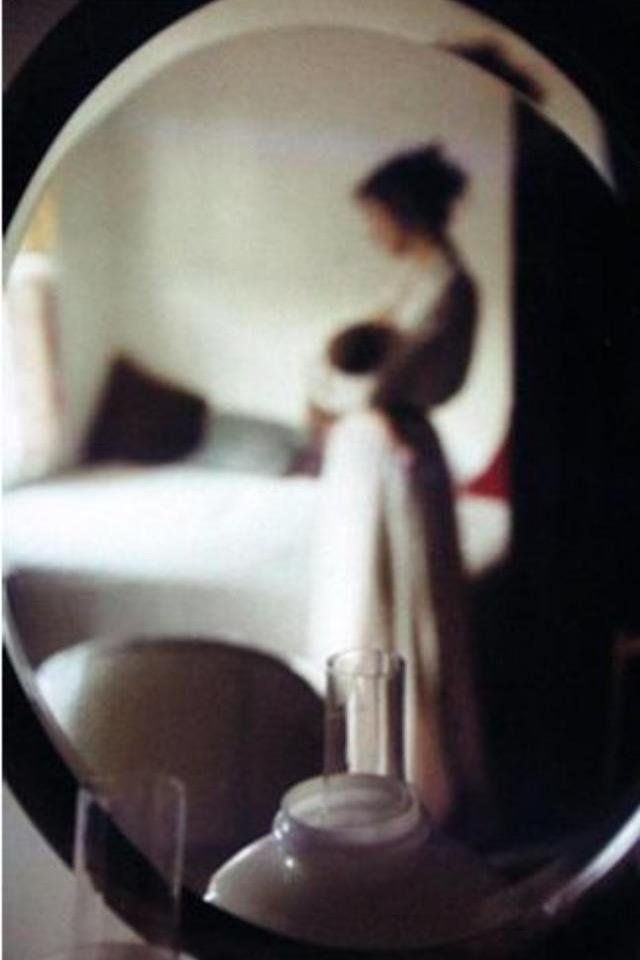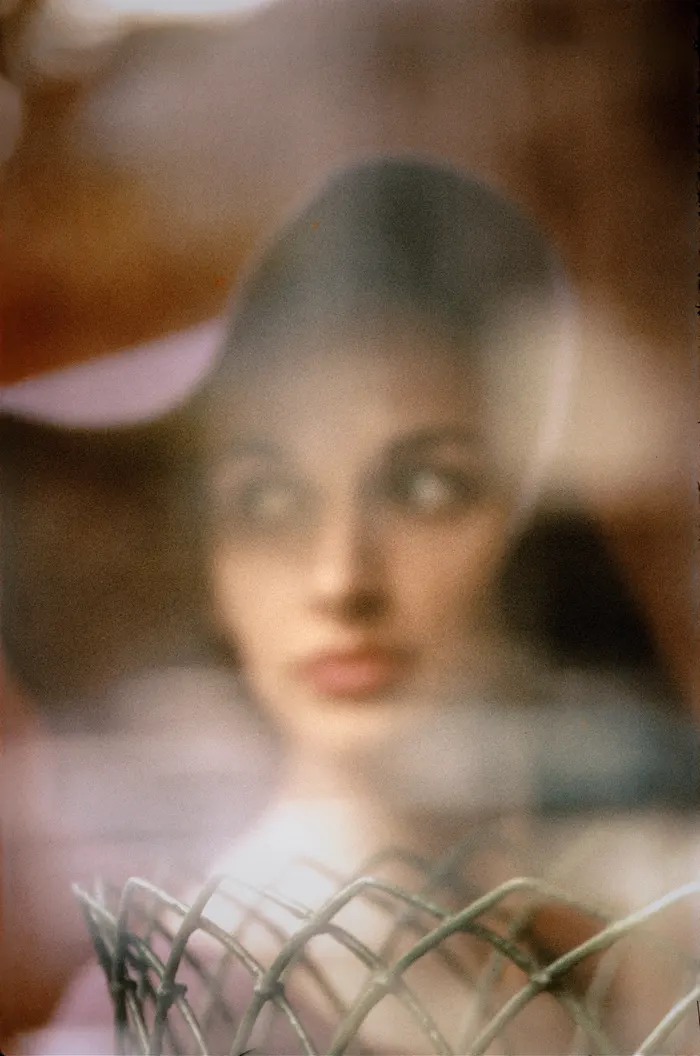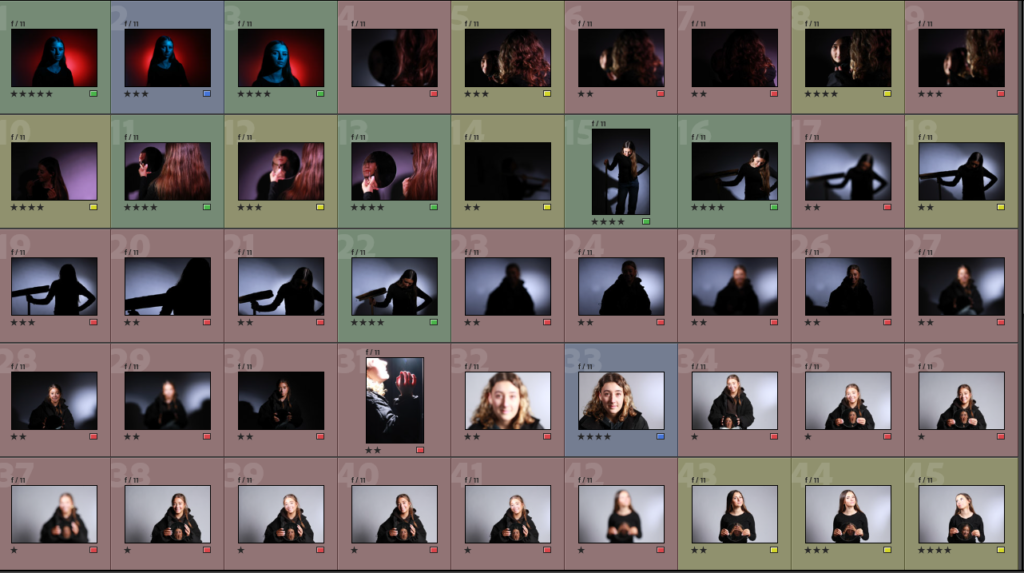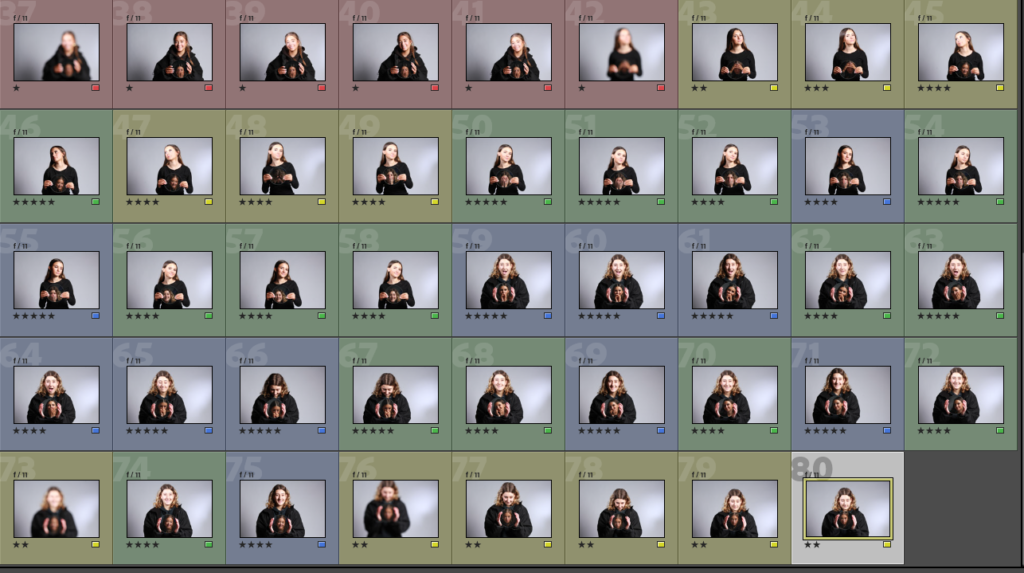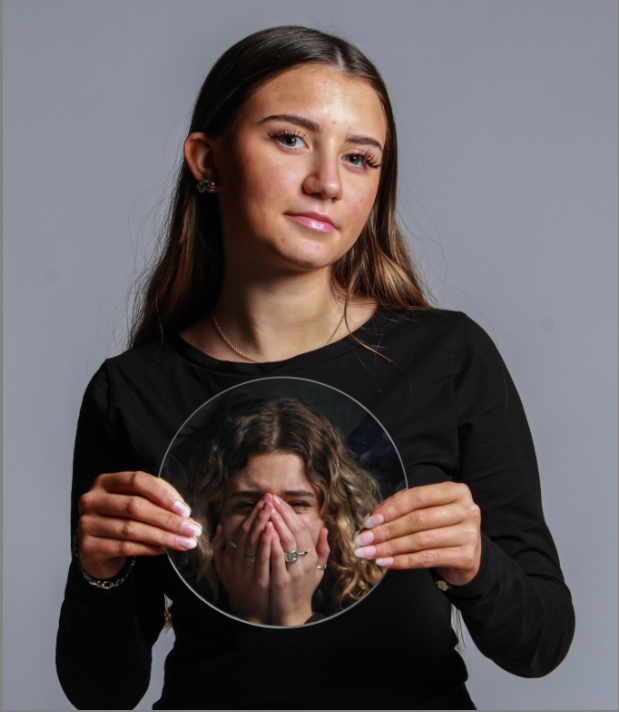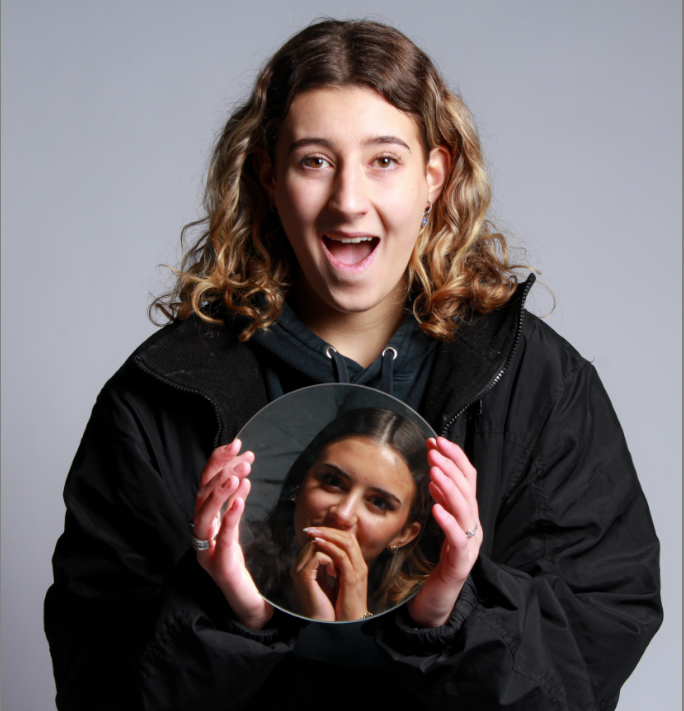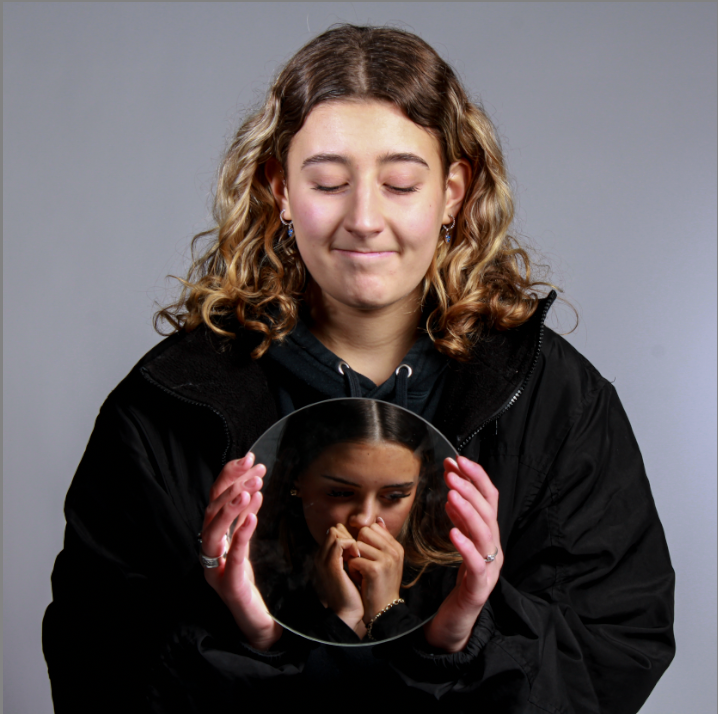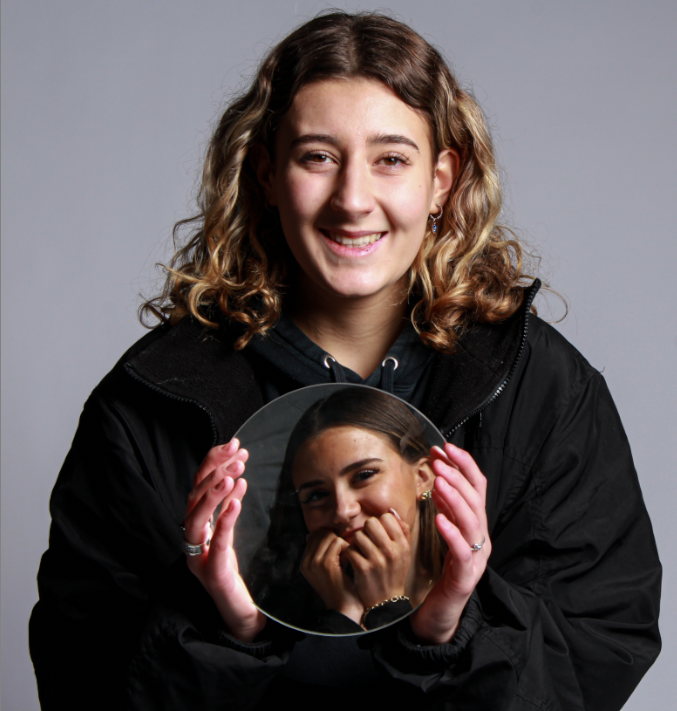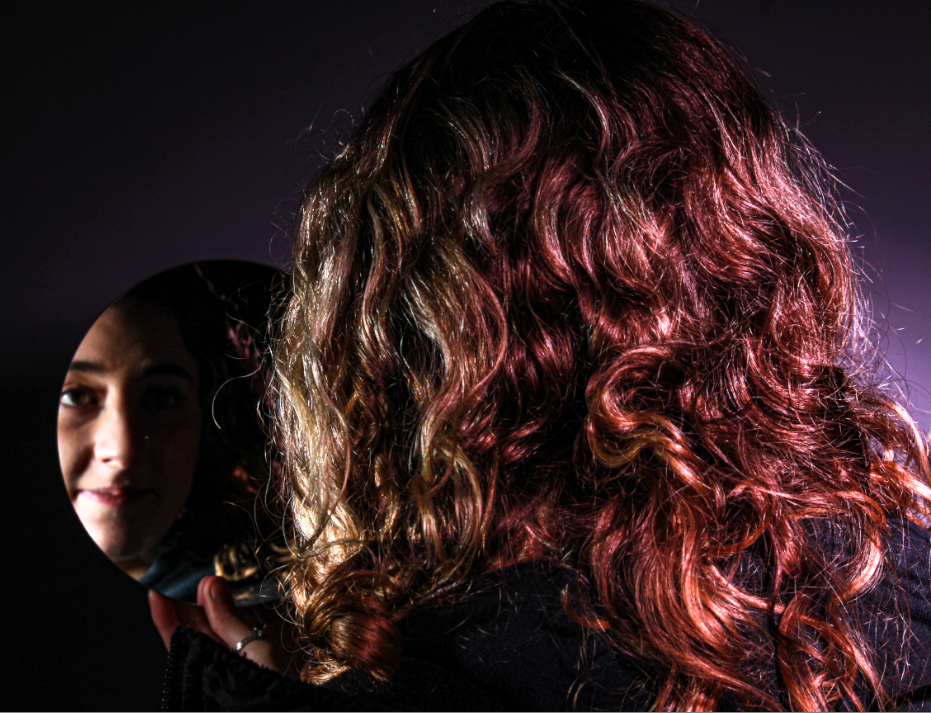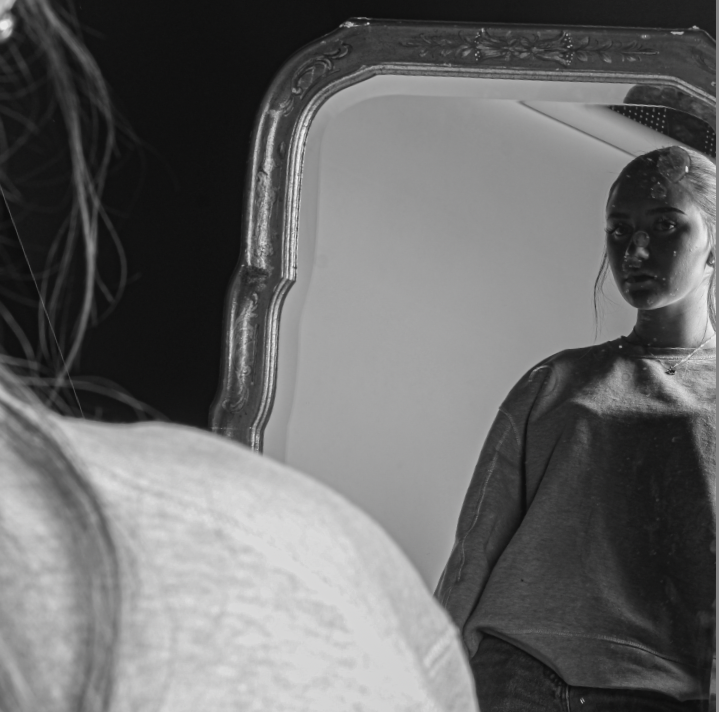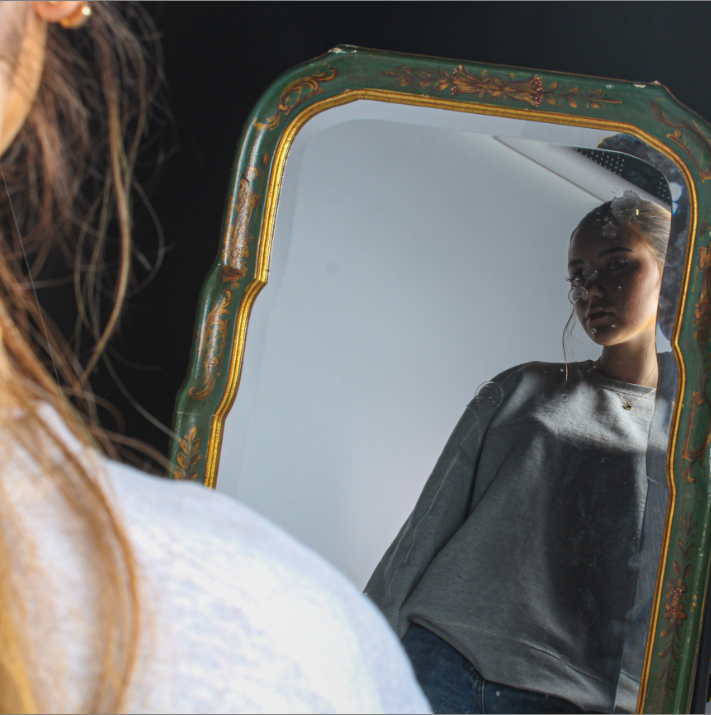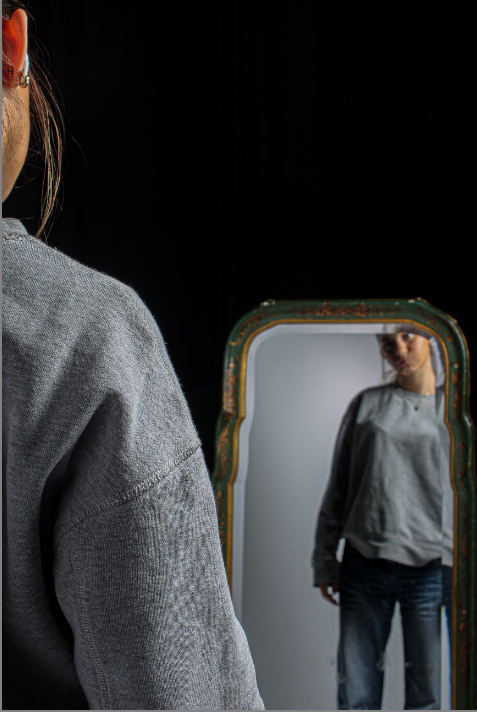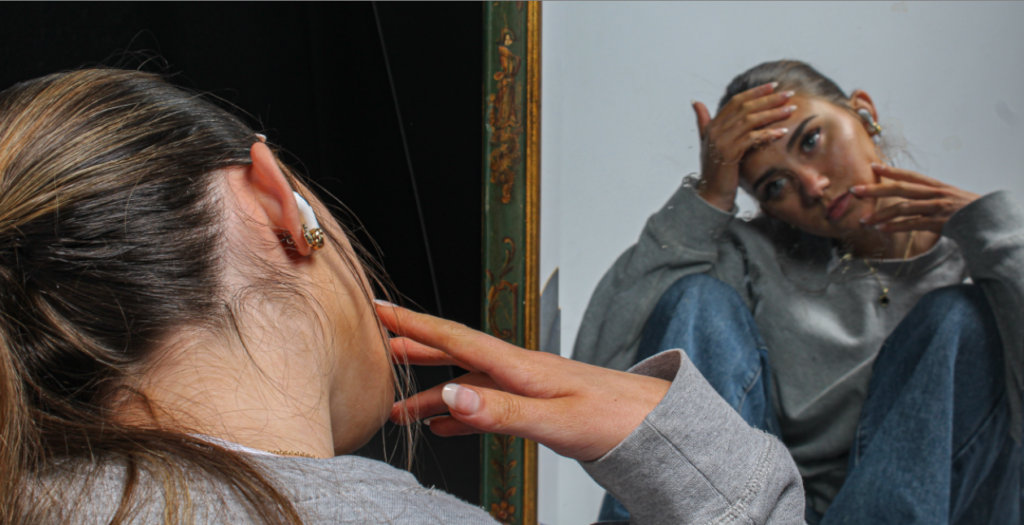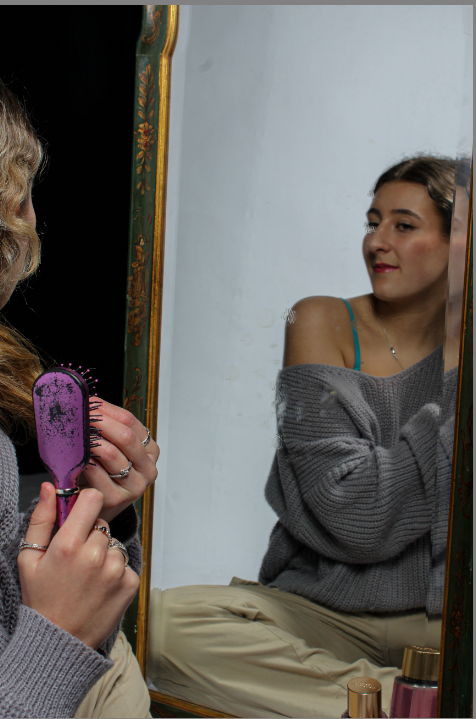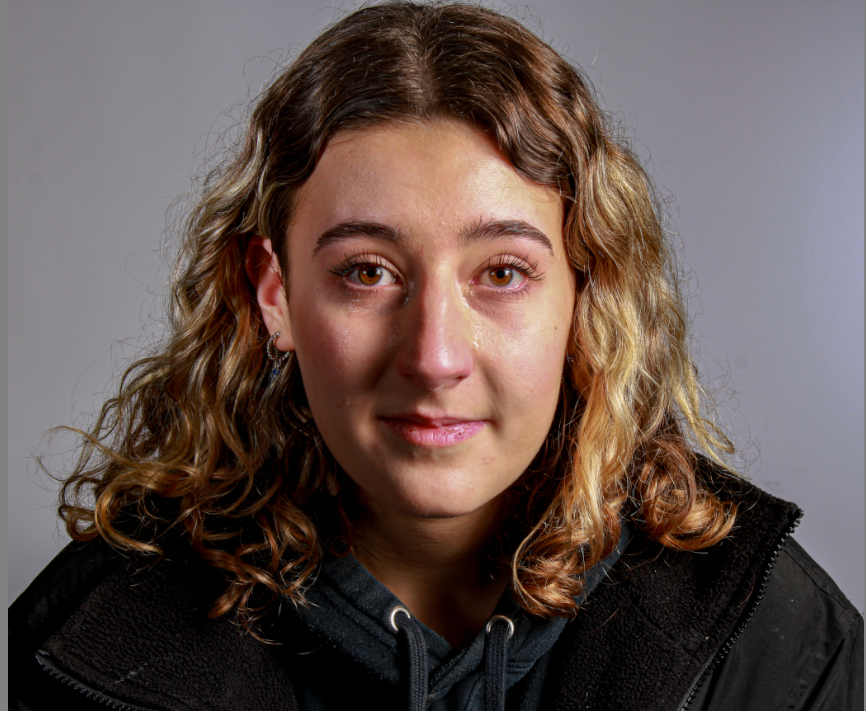I have chosen the following images as my final photos, because they have the best lighting, composition and represent the themes femininity and masculinity the best.
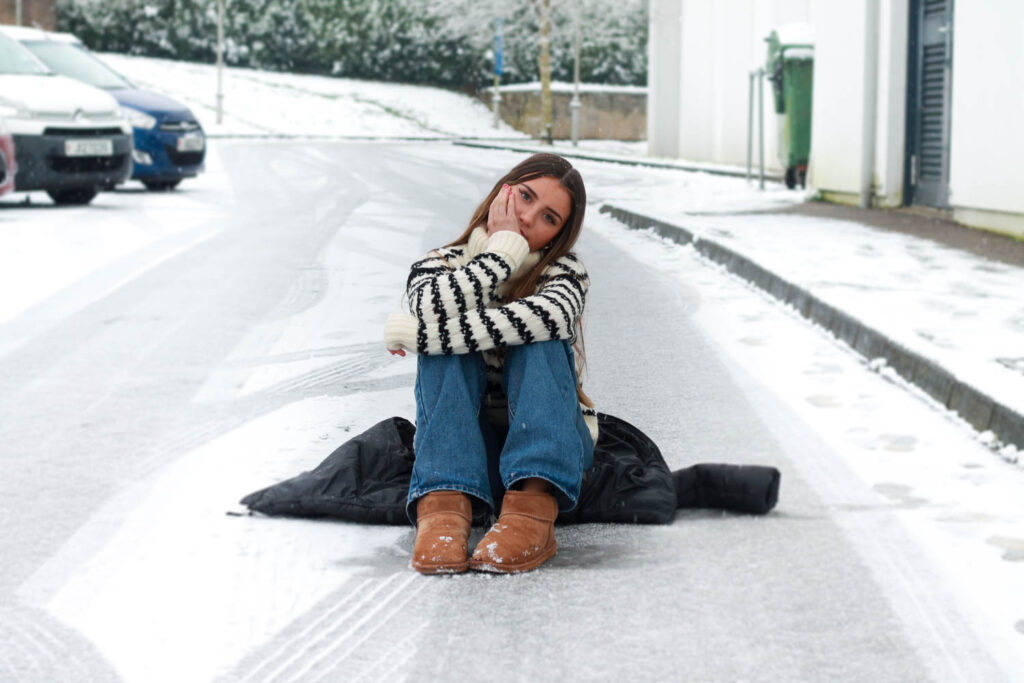

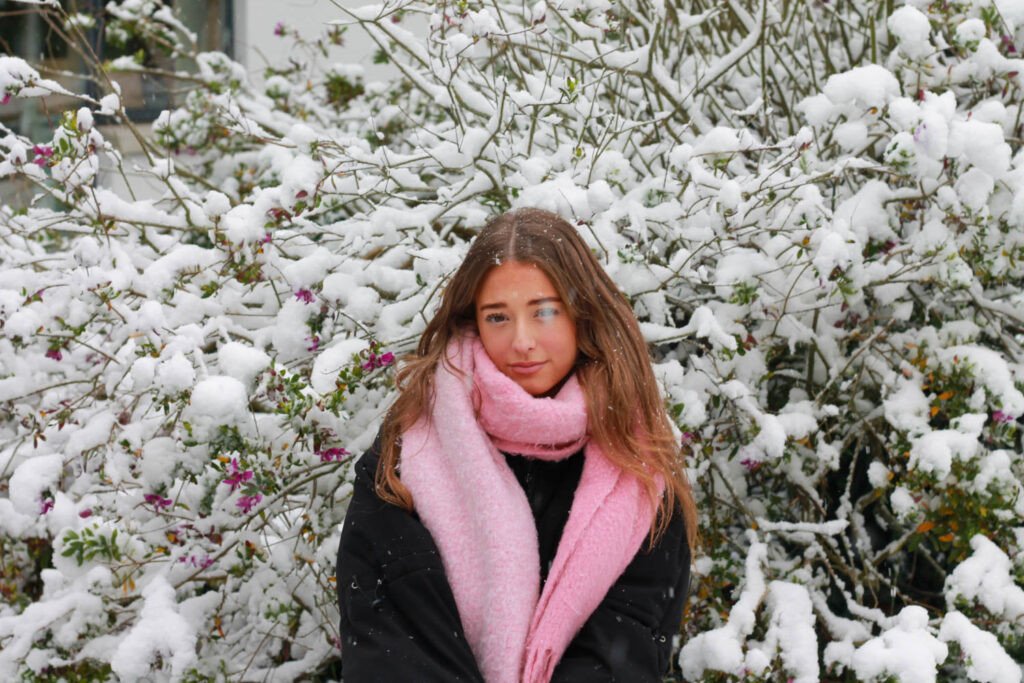
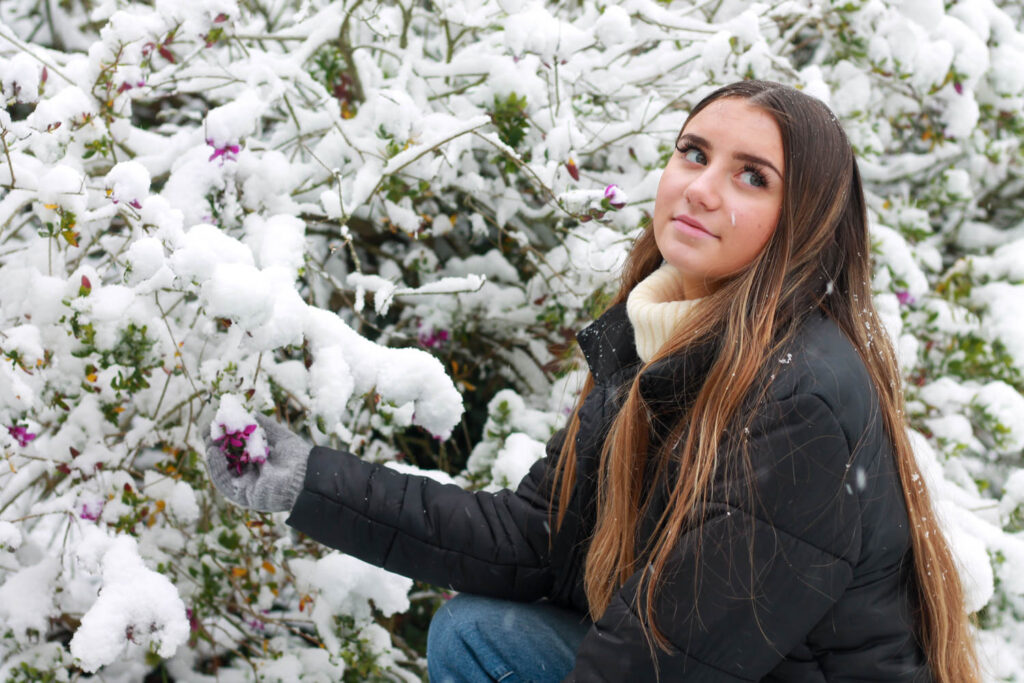
These are my favourite images from the snow, because they use different props, such as the pink scarf and the pink flowers. I think this helped really represent the theme femininity, because it showed how stereotypes, such as flowers and the colour pink represent women. However, the beauty and delicacy of the snow also represents femininity.
These images use natural lighting, because they were taken outside in the snow. The lighting of these images had little control, because they photos were located outside. The colour cast was very white and used cool tones. The camera settings are shown below:
F-stop: f/5
Exposure time: 1/125 sec
ISO: ISO-100
The photograph included mainly the colour white, because of the snow, but it also included the pink scarf, which was used a prop to show stereotypes. The snow in these images was used to portray femininity, because snow is beautiful and delicate, which is also interpretations of women. The tone of the image was very light, because of the white snow all around. The photos that used the flowers used different lines (from the twigs) and shapes (the flowers). This made the photo more interesting, as it added texture behind the model. In the images of the models sat you can see the texture of the ground and the snow, as tire tracks were left in the snow. The viewpoint of all these images were always the model, because they are what represented the femininity theme, as well as some props. The model was also mainly the centre of the photo, so the viewers eye would be drawn more to them. However, in the last image the model is off to the right, so that the viewers eye would be drawn to the flowers instead. There is also lots of contrast between the model and snow. These images were all taken to portray different stereotypes of women and to show femininity in different way.
I made these images, so that I could represent femininity. I took different inspirations from Claude Cahun and Cindy Sherman, because they both present femininity by using different props and stereotypes. The props I used was the pink scarf, because the colour pink is stereotypically associated with femininity. I also used flowers and snow, because both are beautiful and delicate, which is what women are seen as. Flowers are also more related to women, because the women is the one who ‘should be given flowers.’
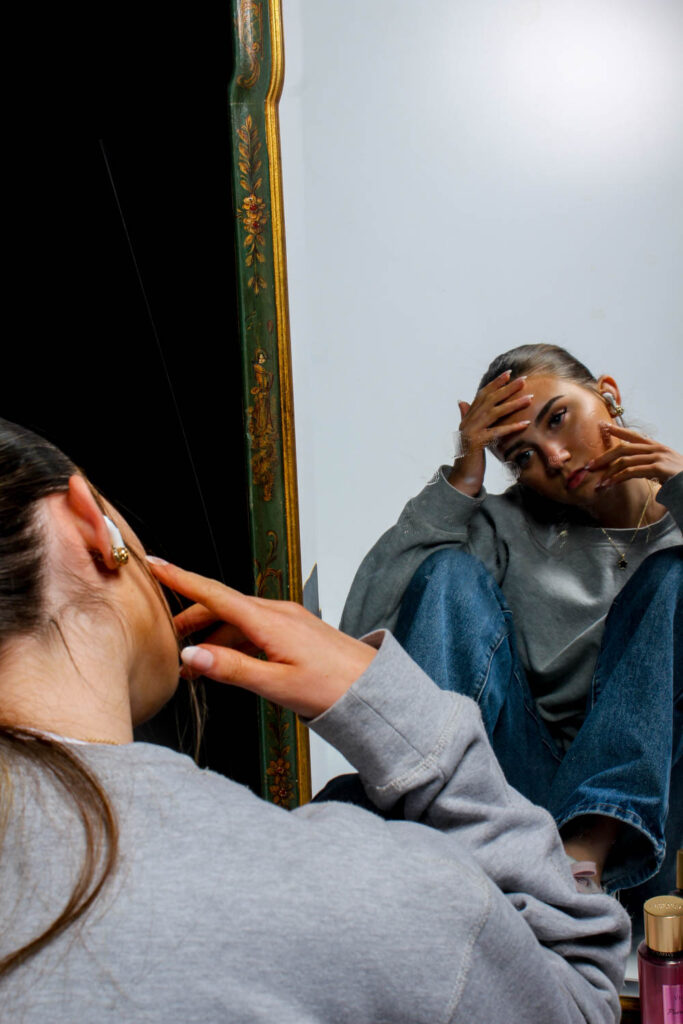
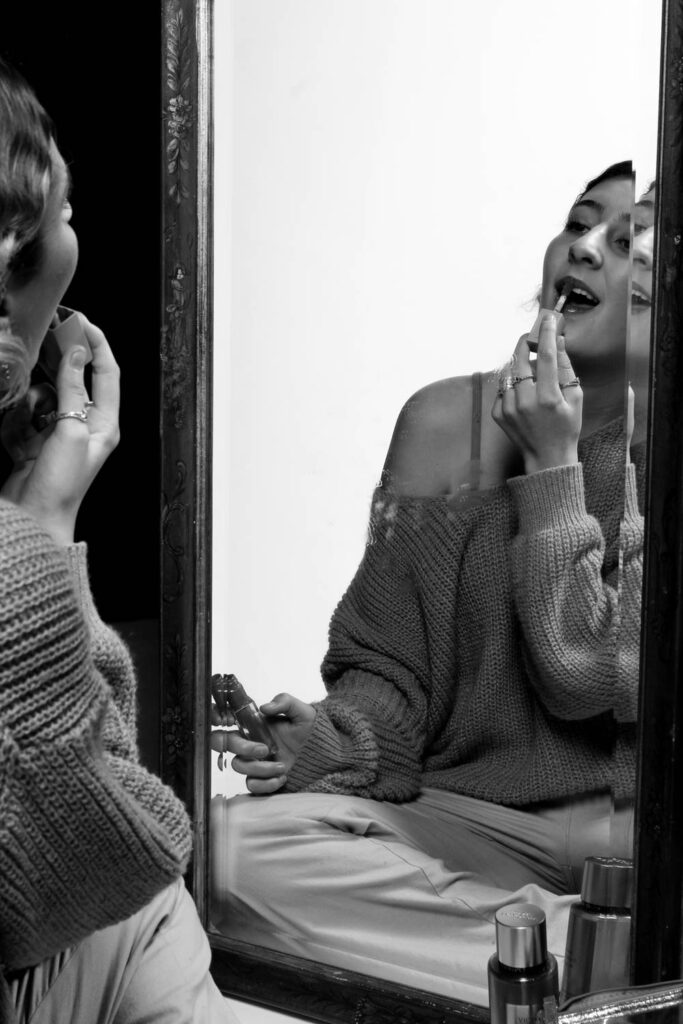
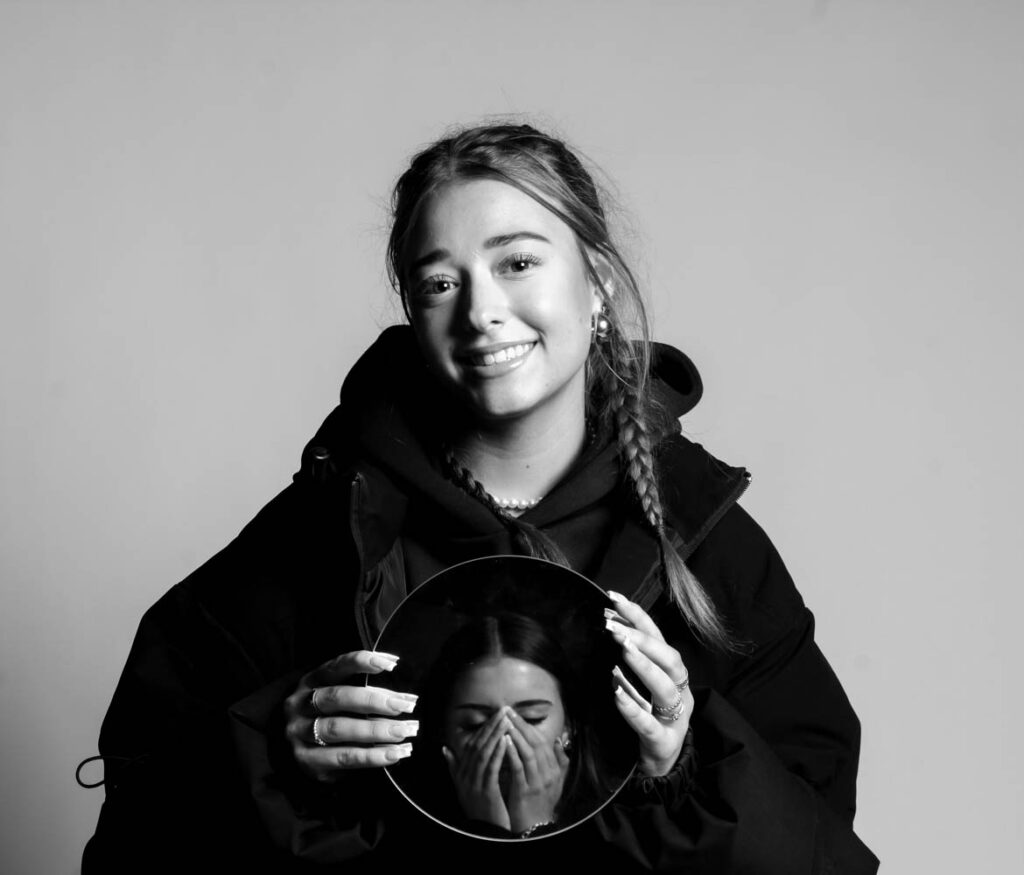


These are my best images using mirrors as props, because I feel like they all tell a story. They show insecure females, who are emotional about their looks, so they apply make up, so they can be beautiful. This also correlates with different stereotypes, such as women are too emotional and women should wear makeup to be beautiful.
Different types of lighting were used in these images, but they were all indoors studio lighting. The white flash was used in the first four images, so it would present a white light. However, in the last image pink lighting was used by covering the light with a pink film. This was used to represent femininity, as a stereotype of females is that they relate to the colour pink. The lighting was very controlled in this shoot, because the lights could be positioned in different ways and the distance and intensity and the lights could also be manipulated. This photo shoot used cold white lighting, but the pink lighting was more warm. The camera settings are shown below:
F-stop: f/11
Exposure: 1/125 sec
ISO: ISO-100
The three black and white images have a higher contrast and contain light and dark tones. They also contain different shapes mirrors. The models holding the mirror were centre in the image, because they are the main focus of the image, so I wanted the viewers eye to be drawn to them more. The images also create a depth of surface illusion, because it looks like the model is stuff inside the mirror. In the image of the model applying make up in the mirror, the mirror with her in is the main viewpoint, because we can clearly see her applying it, even though it is not centred, it is still the view point. This image uses space between the mirror and the model, and also creates a depth of surface illusion, because the mirror creates depth, making the model seem further away. The first image of the model holding her face looking in the mirror contains lots of colours, such as her blue jeans, pink perfume, grey jumper and gold/ green mirror. This image also has different light and dark tones, which creates more contrast in the image. The model is not centred in the image, but she is the main view point of the photo, because she is displaying the theme of femininity. The photo also creates a depth of surface illusion, because the mirror makes the distance of the model from the camera much larger than it actually is. The last image uses the colour pink in the lighting and in the makeup, because the colour pink is associated to women stereotypically. The model in the mirror is the main viewpoint of this photo, even though she is not centred in the image. This photo also creates depth of surface illusion, because of its use of mirrors, which make the model look a different distance away than she actually is.
The model has her hands positioned on her face in this image, because she is insecure. This is a stereotype of women and I took inspiration from Cindy Sherman for this photo, because she also produced a women looking in the mirror looking insecure with a lot of make up on, which also relates to my photos of the models applying make up in the mirror. Make up links to femininity, because makeup is seen as something women should wear and not really men. The two images with the circle mirror show different emotions of the models being sad in the mirror, because a stereotype of women is that they are too emotional. However, the models not in the mirror are happy, because women are not allowed to show that they are being too emotional.
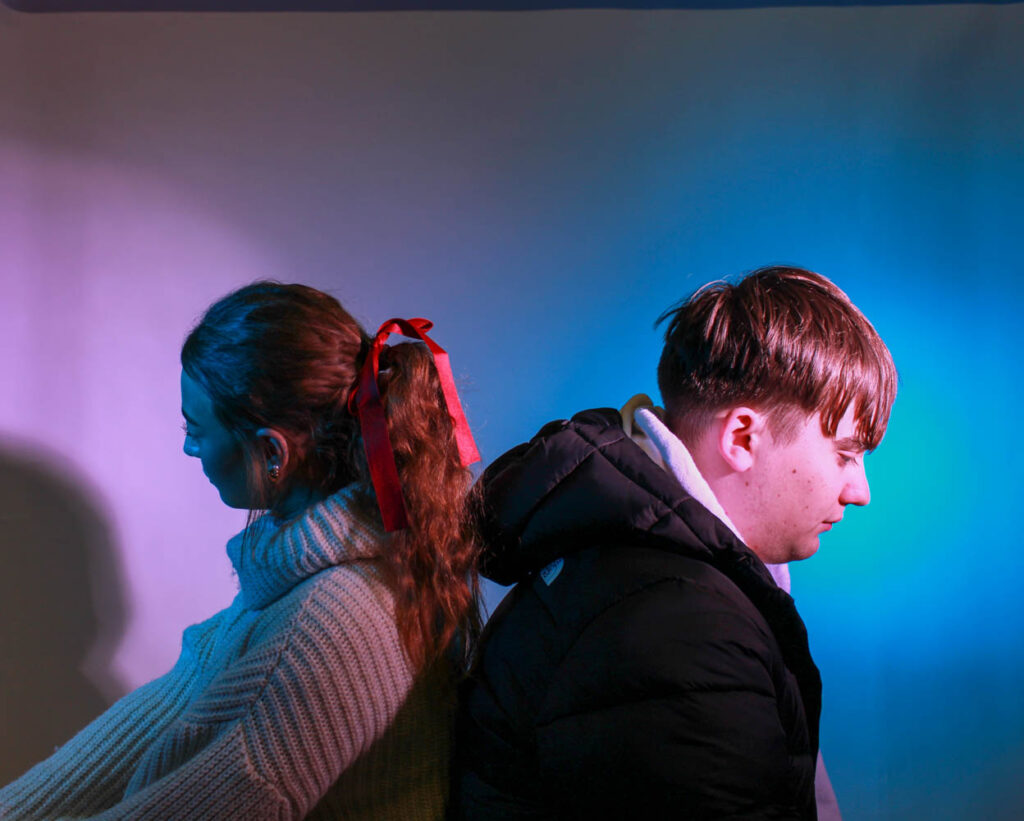
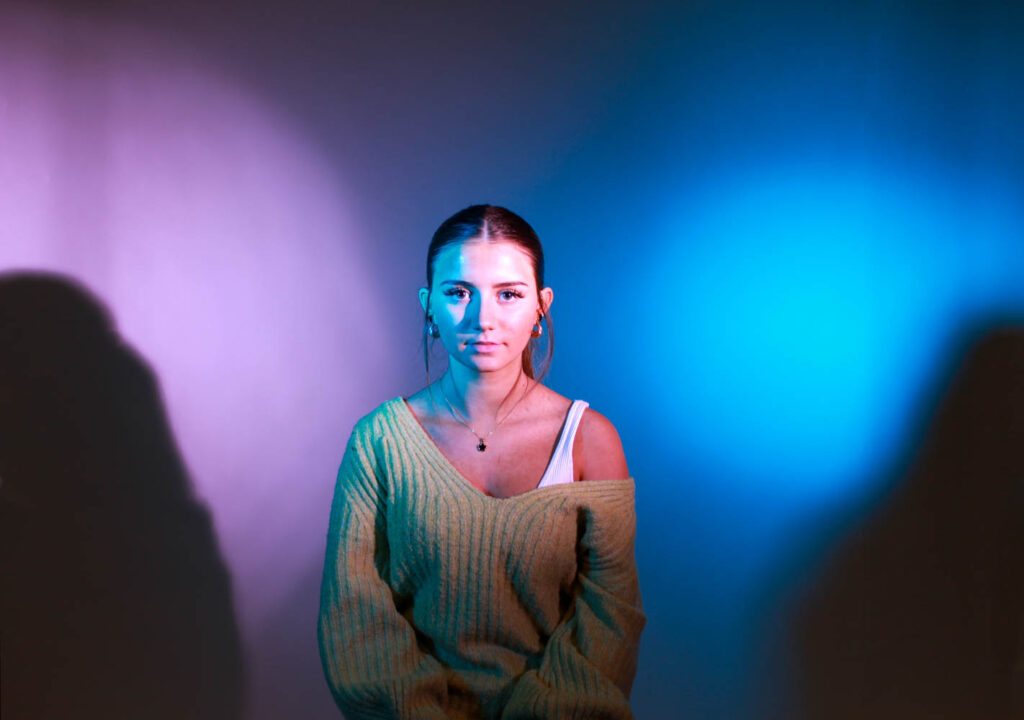
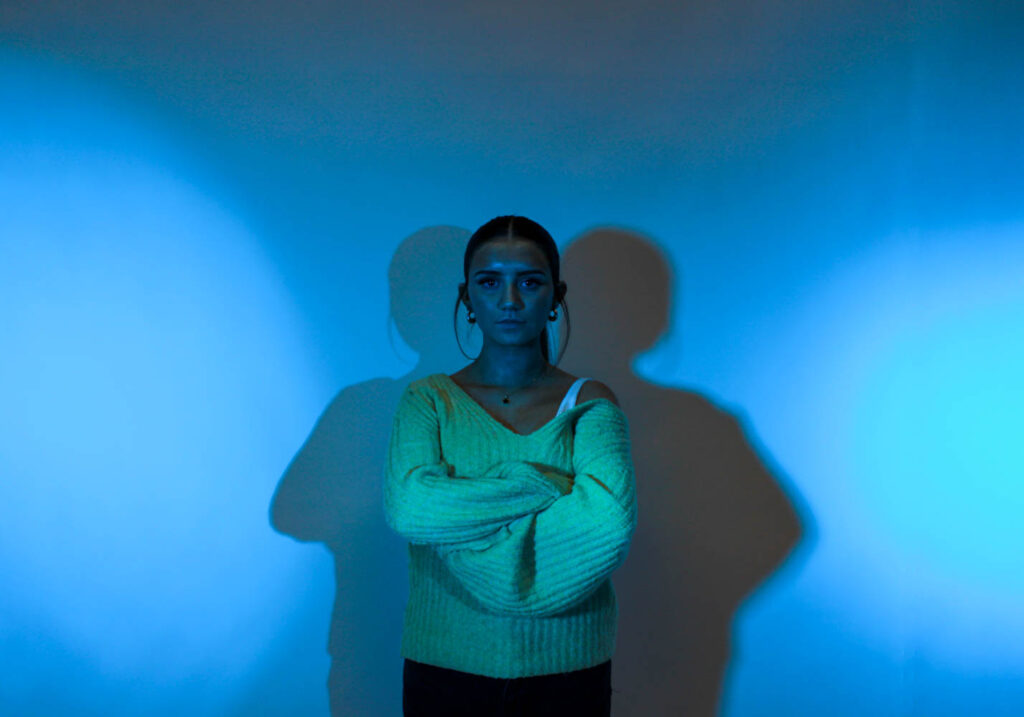
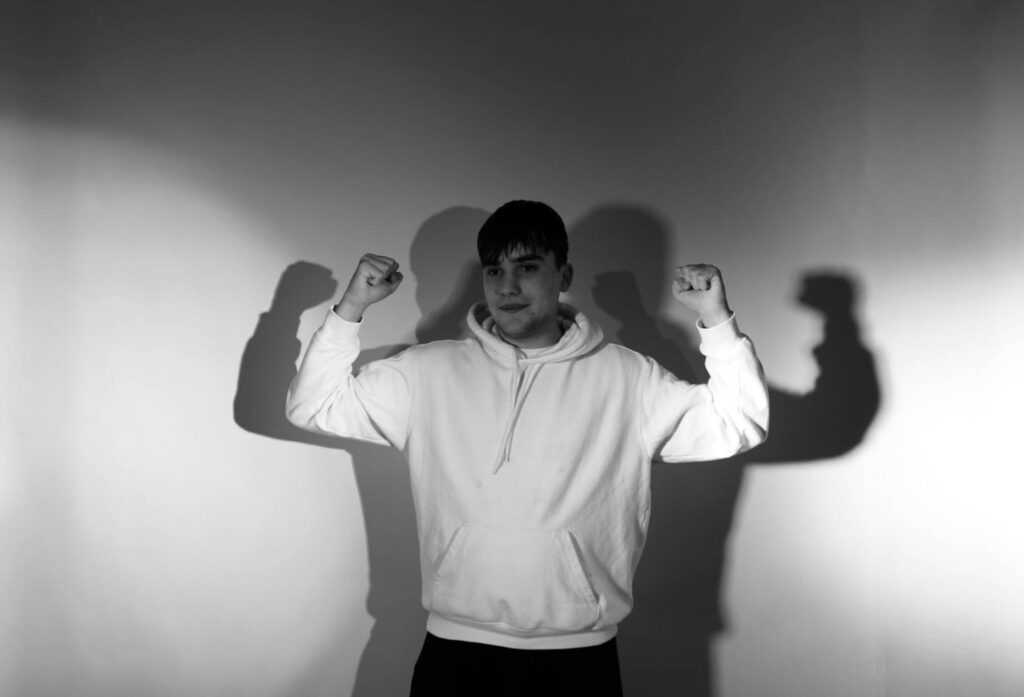
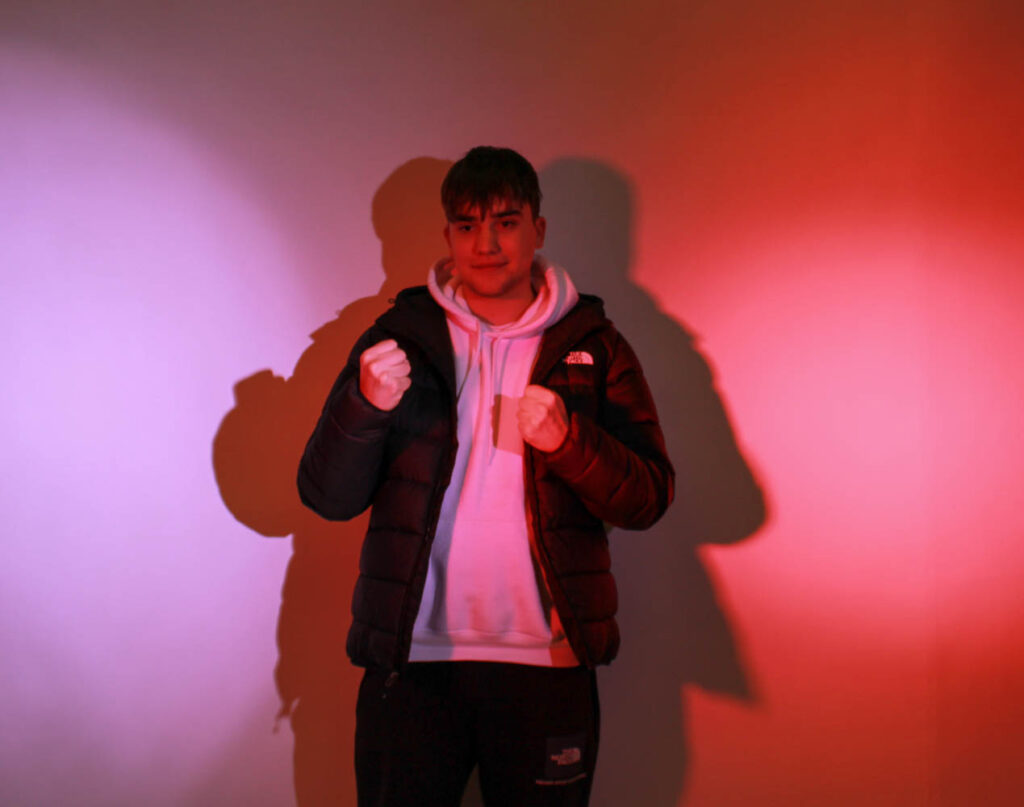
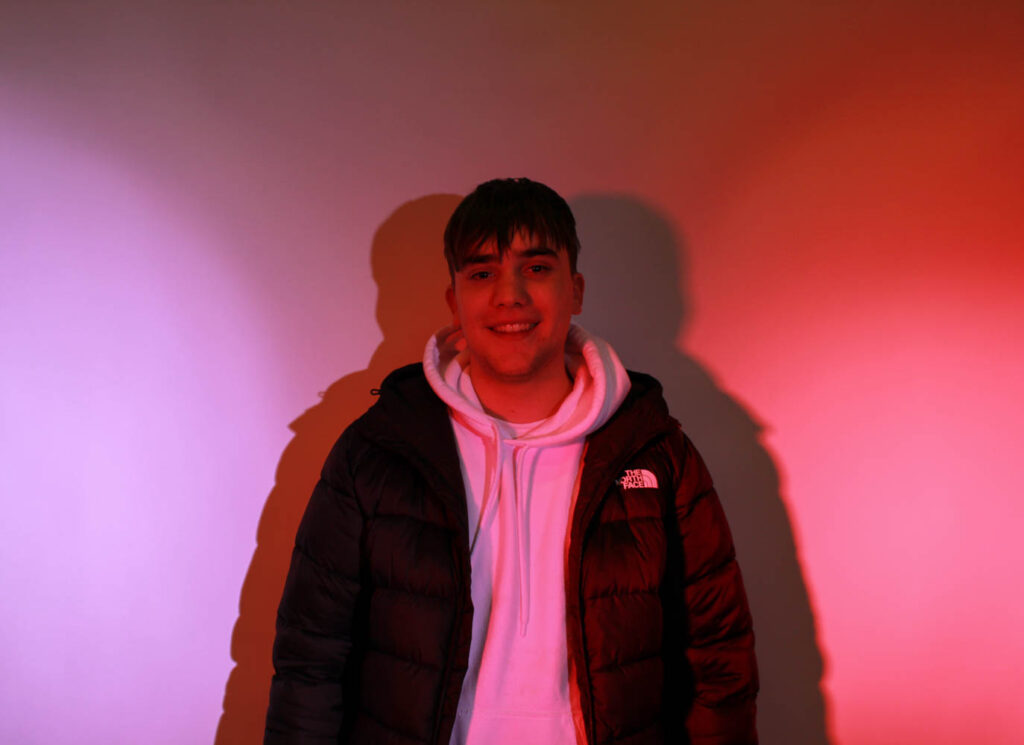
These are my best photos, when using different coloured lighting to portray different stereotypes. These are my best, because they present the different coloured stereotypes well, while also presenting other male stereotypes and going against stereotypes. The stereotypes presented are that men are strong and tough, but also that they are aggressive, which are shown. However, both the female and male model go against the colour stereotypes, as they pose in the opposite colour (eg man in pink lighting).
These photos all used indoor studio lighting, which was either pink, blue or white lighting. The lighting was very controlled in this shoot, because the colours, positioning, distance and intensity of the lighting could all be controlled. The images used different tonal ranges, because it used different coloured lighting. The black and white image used white lighting and the image using just blue lighting use cold tones. However, the images using pink lighting only use warmer tones. The images using both pink and blue lighting have both warm and cold tones. The camera settings are shown below:
F-stop: f/4.5
Exposure: 1/60 sec
ISO: ISO-100
These images either use blue, pink or both colours. They have light and dark tones and have bits of contrast, however the black and white photo has more light and dark tones and more of a contrast. These images contain shadow shapes behind the model. The model/ models are centre in all these images, because they are the main view point and I wanted the viewers eyes to go directly towards them. These images had different layout, where the male model would be in pink and the female model in blue vies versa. The models also had many different poses throughout, such as flexing muscles to present the stereotype that men are strong and tough, or squaring up to show that they are aggressive.
I took inspiration from Claude Cahun and Cindy Sherman in this shoot, because they both present different stereotypes, however Cahun also goes against stereotypes, so I also experimented with that by having female models stand in blue light with a male pose or stance and vies versa. I also had my male model stand in the same lighting that he did when he was being aggressive, and instead of being aggressive just smile, so he could go against the stereotype that males are aggressive.

